As climate change intensifies and urbanisation accelerates, cities around the world are increasingly defined by water. In some cases they have too little, sometimes too much, or sometimes water that’s too dirty.
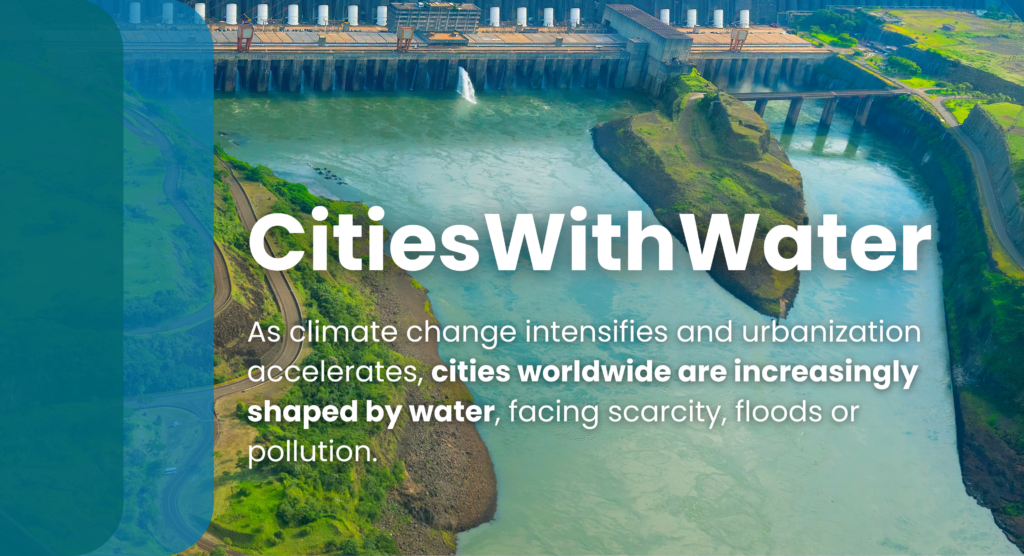
The CitiesWithWater initiative has placed water firmly on the urban sustainability agenda. Through a webinar series and an international photography competition, CitiesWithWater is raising the voice of cities and learning how they can and should act now to safeguard water systems, human well-being and ecosystems.

In the recent webinar titled “Too Much“, hosted in collaboration with the World Water Council, city leaders and technical experts explored how urban areas are preparing for or recovering from floods, storms, sea-level rise and the cascading impacts of climate change. This second installment in the CitiesWithWater series followed the success of the first (“Too Little”) and sets the stage for the upcoming webinar, “Too Dirty”, which will delve into water pollution and the urgent need to protect downstream ecosystems and coastal waters.
The “Too Much” webinar (18 June 2025) highlighted that flood-related disasters have increased by 134% since 2000 (WMO, 2021), a statistic that no city can afford to ignore. Panellists from cities including Kumamoto (Japan), Lusaka (Zambia), Ningbo (China), and Larissa (Greece) shared powerful case studies on how their municipalities are adapting to flood risks.
What happens upstream doesn’t stay upstream. With the UN Ocean Conference (UNOC) recently reaffirming the vital links between terrestrial and marine systems, CitiesWithWater is also working to bridge the gap between urban water governance and coastal health. Dirty or excessive water from cities — be it stormwater, untreated sewage, or plastic waste — flows downstream, posing major threats to fragile estuaries, coral reefs and fisheries.
In the upcoming “Too Dirty” webinar, these linkages will be explored more deeply. How can cities protect downstream ecosystems from pollution while safeguarding human health and livelihoods? What does it take to reduce nutrient runoff, manage industrial discharge and treat wastewater effectively in dense urban settings?
With the Convention on Wetlands COP15 fast approaching in July 2025 in Victoria Falls, Zimbabwe, CitiesWithWater is also drawing attention to the vital role of urban wetlands. These ecosystems, often overlooked in city planning, act as natural sponges that absorb floodwaters, filter pollutants and recharge aquifers.
Wetlands also serve as critical habitat for biodiversity, cooling spaces for urban residents and buffers against sea-level rise and coastal storms. Yet urban expansion continues to degrade or destroy them. Between 1970 and 2015, 35% of the world’s wetlands were lost (Ramsar Global Wetland Outlook, 2018), and many that remain are under pressure from pollution, encroachment and climate change.
Cities that invest in wetland protection and restoration — like Cape Town’s rehabilitation of the Zandvlei Estuary or Kolkata’s use of its East Kolkata Wetlands for natural sewage treatment — are leading the way in reintegrating nature into urban water systems.
Urban water systems are not just pipes and pumps. They are the veins and arteries of a living city to sustain health, enable growth and connect communities. Yet they are under serious threat:
About the author:
Erik Hirschfeld is a well-known Swedish birder fortunate to live in Malmö. He is the author of several books, including The World’s Rarest Birds (2013) covering global bird conservation and Fåglarnas Malmö (2011), covering Malmö’s birds and their interaction with humans. He has served on bird record committees in Sweden, Jordan and the United Arab Emirates, and has been involved in several scientific expeditions, especially in the Middle East. Fifteen years ago he founded Vilda Malmö, initially a lose network of nature guides, in order to highlight Malmö’s natural environment to its residents. Today he spends his birding time between being an active bird bander, studying migration of seabirds, and running Scandinavia’s largest bird tour company, AviFauna. He frequently gives illustrated talks on birds to both beginners and professionals, and guides people interested in birds for Vilda Malmö.
Perched at the southern tip of the Scandinavian Peninsula, Malmö offers migratory birds a convenient shortcut across the water to Denmark and mainland Europe. Much like the famed Falsterbo, just 30 km down the coast, Malmö is perfectly positioned along a major migratory route. When on the move, many landbirds avoid vast bodies of water and instead funnel through areas with shorter crossings. Add the iconic Öresund Bridge into the mix, and you’ve got a ready-made flight path. On windy days, birds of prey can often be seen using the bridge as a navigational aid during their spring and autumn journeys.
But geography alone doesn’t explain Malmö’s birding success. Migrants won’t stop unless there’s a good reason to. That’s where Malmö’s clever city planning and habitat diversity come into play. The city is a patchwork of microhabitats catering to a dazzling variety of birds with different needs.

Red-necked Grebes


Black Redstarts (male & female)
Take the coastline, for instance. Stretching out in a mix of sandy, muddy, and rocky areas, it serves up a smorgasbord of habitats for wading birds, perfect for sanderlings, bar-tailed godwits, and purple sandpipers. In the harbour, boulders placed as wave-breakers become life-saving shelters for tired migrant passerines hiding from hungry sparrowhawks. Seabirds following the east-west coast are often seen rerouting dramatically to avoid land, providing unforgettable spectacles for those positioned at just the right windy vantage point. In fact, gannets now winter offshore in large numbers, mingling with massive flocks of cormorants. Two species of albatross have even made surprise appearances here, an astonishing rarity in these parts, and sooty shearwaters from New Zealand have become almost annual guests.
One of Malmö’s most productive hotspots is the stretch along Ribersborg Beach. Here, seaweed is cleared to please beachgoers and then dumped near a hedge by Lagunen harbour. That unassuming pile teems with insect life and sits beside a dense alley of trees, offering both food and shelter to weary warblers. Come migration season, that compost pile becomes a lifeline. It’s also the site of an ongoing bird banding project, and when the seaweed dries out, it’s used to fertilise Malmö’s public lawns, an example of ecology in action.
Inland, a series of freshwater ponds offers safe nesting and feeding areas to mute swans, little grebes, and the red-necked grebe, a striking species whose springtime courtship dances can be enjoyed up close, even without binoculars. These ponds give Malmö residents front-row seats to one of nature’s most theatrical performances.
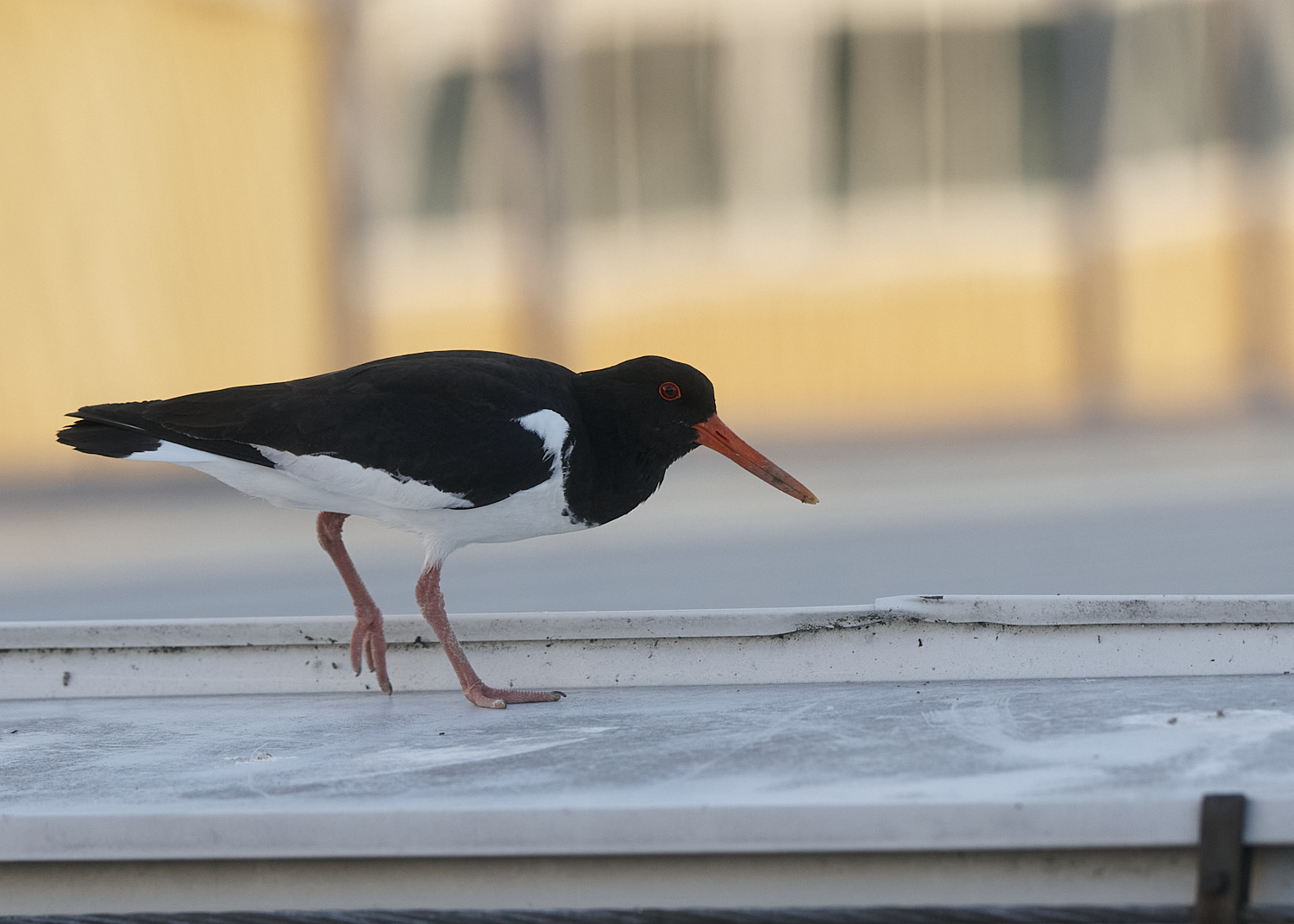
Oystercatcher
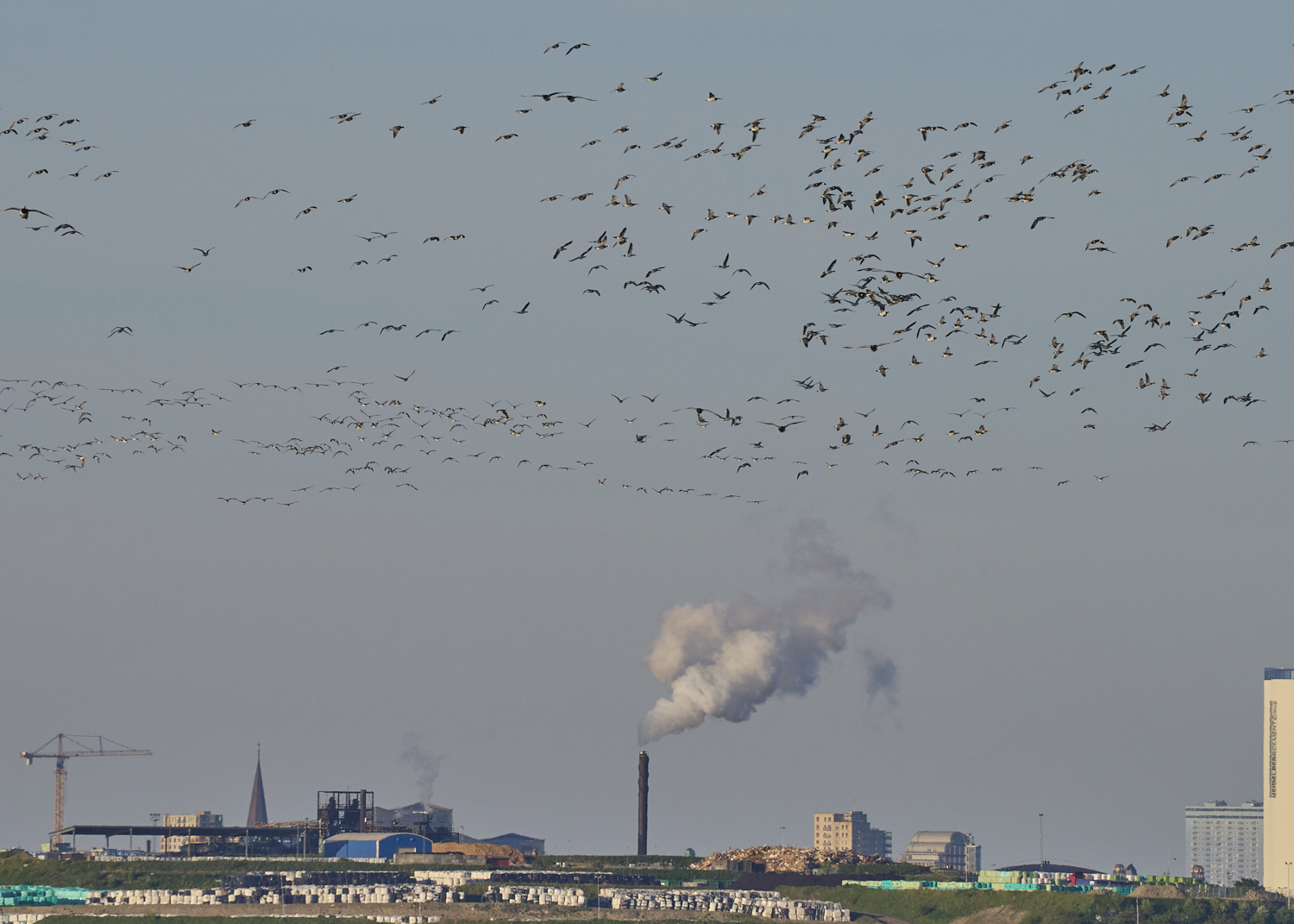
Barnacle Geese

Red-necked Grebe
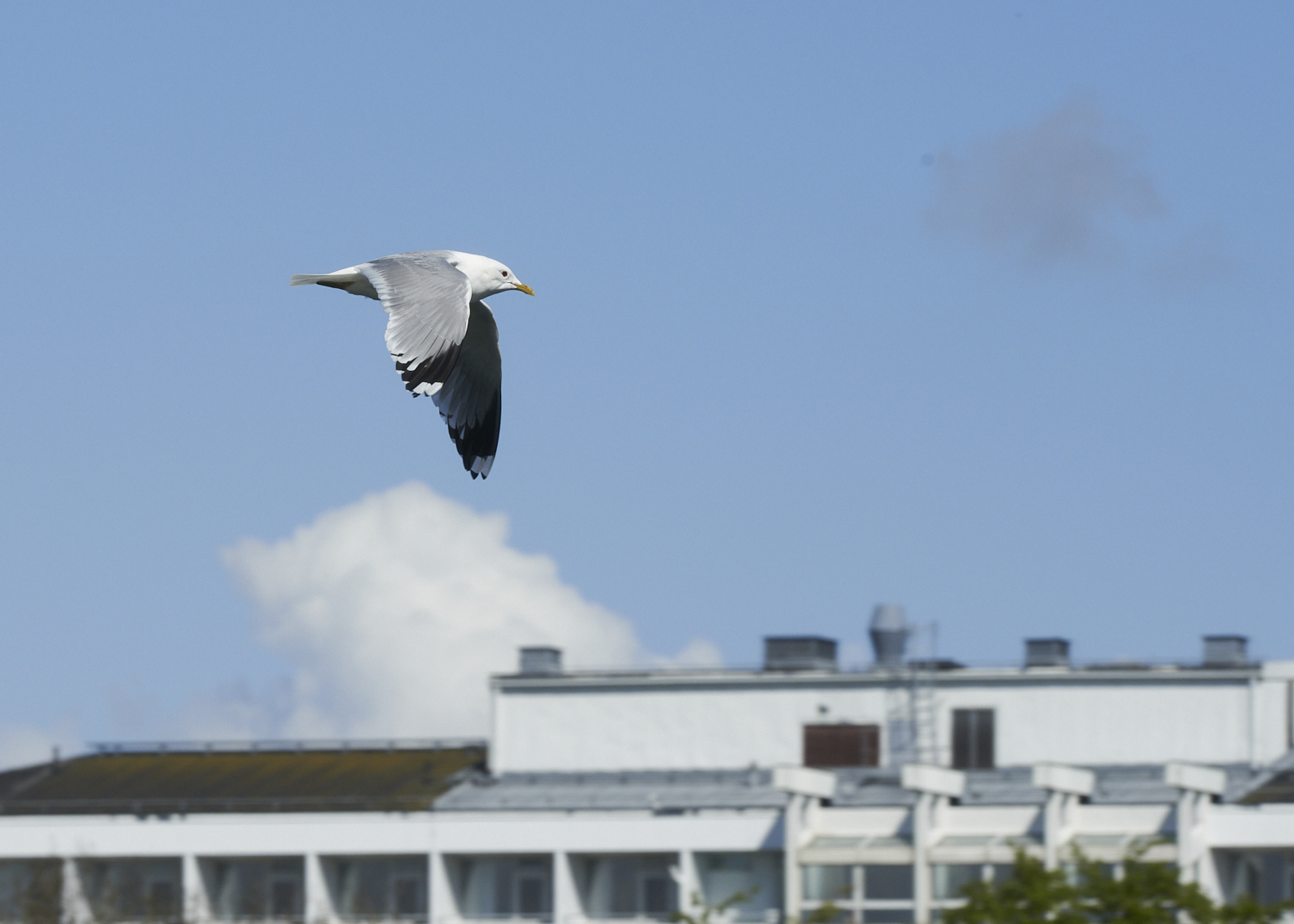
Common Gull

Barnacle Geese
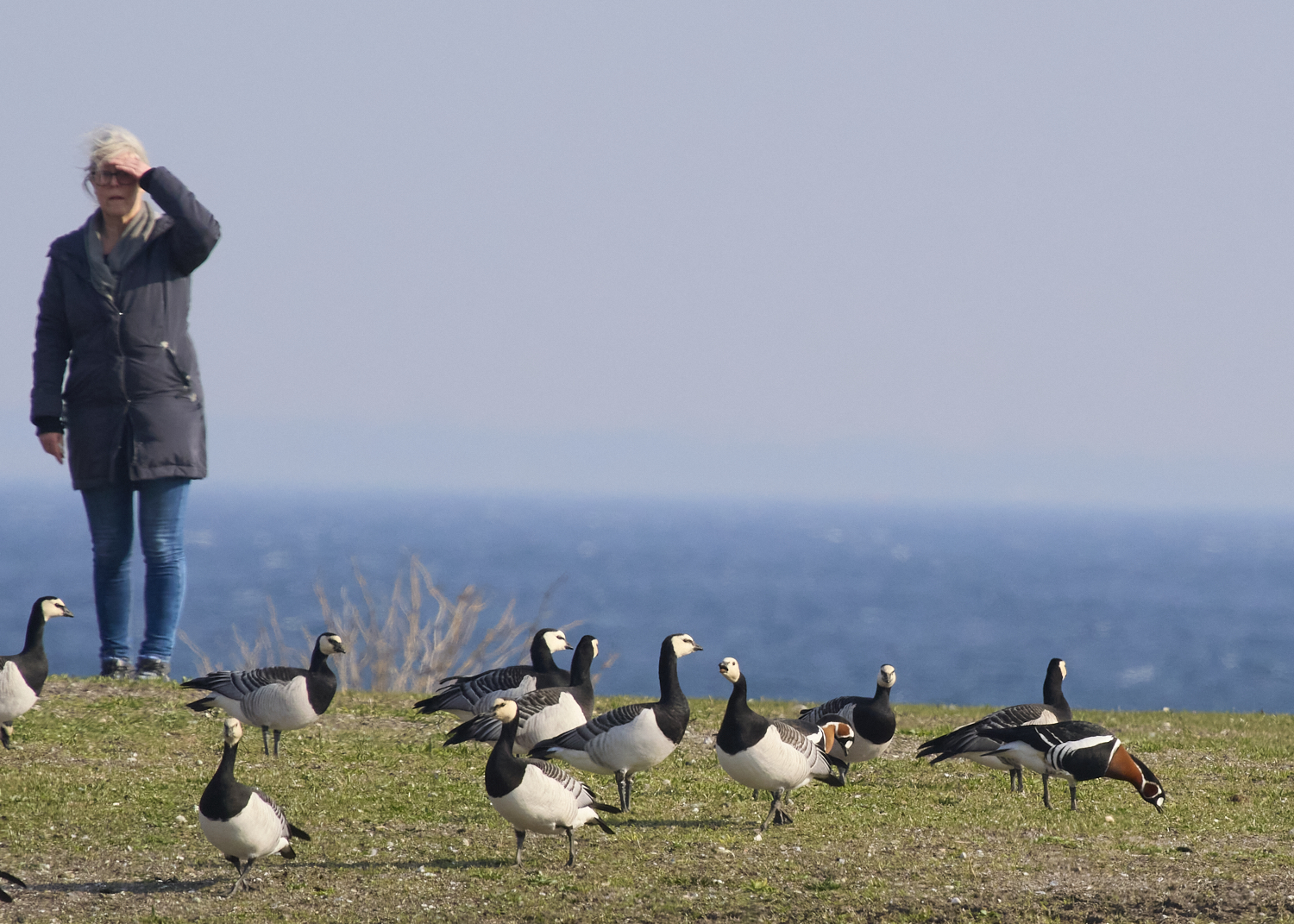
Barnacle Geese with two rare Red-breasted Geese
Every spring, a headline act unfolds in the city. Ravens nest in an old shipbuilding crane beside a waterfront residential zone, an urban first in Sweden. Unlike the domesticated Tower of London ravens, these are wild birds, voluntarily choosing Malmö’s industrial relics as breeding grounds.
The city’s beloved parks are no less impressive. Hammars Park, with its wild undergrowth, attracts songbirds like blackcaps, wood warblers, and goldfinches. Pildammsparken, with its elegant promenade and wide pond, plays host to ducks, gulls, and breeding great crested grebes showing off their curious greeting displays in spring. It’s a favourite among preschoolers, grandparents, and birders alike, offering easy access and rich wildlife. Slottsparken, meanwhile, offers a blend of trees and water that appeals to both breeders and migrants.
In late morning, gulls descend from the coast to bathe in the parks’ freshwaters. Tufted ducks and common gulls, with nesting grounds as far away as Siberia, make Malmö their winter base. Come late February, they’re joined by the first migrant lesser black-backed gulls, newly arrived from central and eastern Africa. Meanwhile, black-headed gulls spend the colder months here after journeys from Finland and the Baltics. Banded individuals, some as old as 30, have revealed fascinating life histories stretching across multiple cities and countries. The combination of being raised and spending the winter in highly urbanized habitats seems to be favorable to longevity.
St Pauli Cemetery, oriented north to south, is another seasonal hotspot, especially in spring. Here, you might glimpse the cryptic wryneck or the elusive ring ouzel, more commonly found in the remote fjells of summer. Redstarts regularly nest here too, making the cemeteries a true urban oasis.
Even Malmö’s high-rises play a part. Districts like Västra Hamnen, Dockan, and Limhamns Sjöstad resemble mountainous terrain to birds like the black redstart, which now echo their melodic calls through Malmö’s urban canyons. Some individuals even winter here, finding refuge in the evergreen ivy on buildings near the central station, alongside European robins.
The charismatic oystercatcher also makes its urban presence felt. Arriving in late February, they roost in flocks on jetties used by swimmers in summer before fanning out to nest on flat rooftops. Common gulls, meanwhile, often share these rooftops, while house martins and common swifts each have their architectural preferences. Clay nests on high buildings suit the martins, while the swifts prefer roof tiles on villas in Malmö’s western suburbs.
And let’s not forget the barnacle geese. Once Arctic-bound migrants, they now breed in Malmö in huge numbers, a mix of introduced birds and natural colonists. In May, local geese look skyward as their distant cousins pass overhead in dramatic, noisy formations, en route between the Low Countries and their Novaya Zemlya breeding grounds. Some Malmö-born geese have even been spotted in the Arctic, and vice versa.

Oystercatchers
Of course, the benefits of this biodiversity aren’t just for the birds. Access to urban nature is known to boost human well-being, and Malmö makes it easy to connect with the wild. Through the Vilda Malmö (Wild Malmö) program, residents can join free expert-led tours covering birds, bats, trees, marine life, and more, kept to small, intimate groups. For those who prefer to look for urban wildlife on their own, there are information signs placed around the city, with photos or drawings of the local fauna.
Malmö’s love of birds runs deep. Even its bird alert app, usually the domain of avid birders, has over 1,000 subscribers, proving that in this city, the skies above are just as captivating as the streets below.
With World Health Day coming up on the 7th of April, we reflect on how cities are more than concrete and skyscrapers – they are homes to millions seeking healthier, happier lives. By bringing nature back into the heart of urban living and fostering communities that thrive mentally and physically, cities can reshape how people connect with their environment.
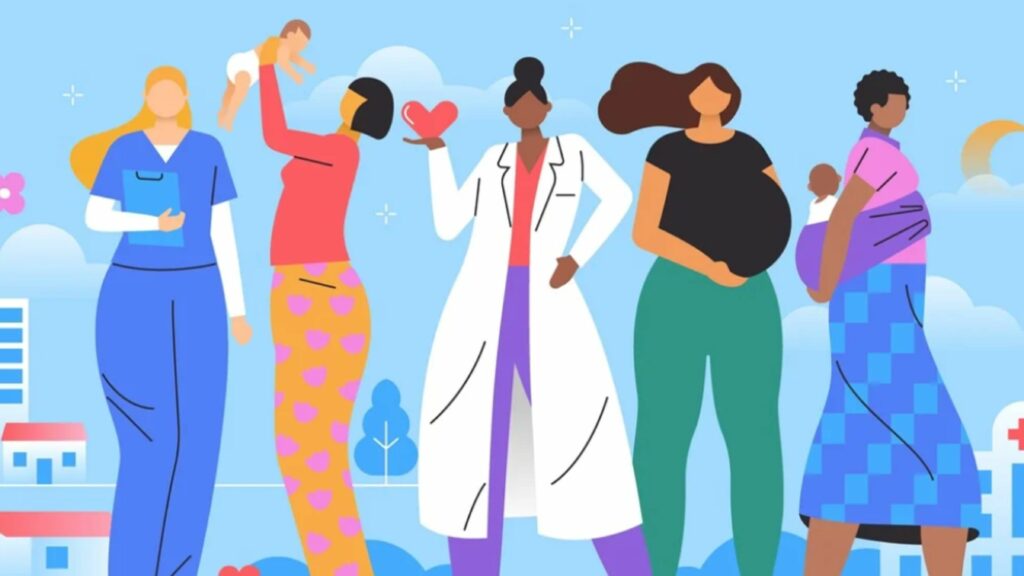
Throughout history, humans have been deeply connected to nature, relying on it for survival, from the air we breathe to the water we drink, to the food we grow. Nature connectedness explores how we think, feel, and interact with the natural world. Feeling close to nature fosters a sense of belonging, encourages us to seek it out, and enhances our happiness when immersed in it. Without nature, there is no “us.” When we feel very close to nature, we recognise ourselves as part of the natural world and value our relationship with it.
Contact with nature has many benefits; studies demonstrate that people with high nature connectedness tend to have frequent, long-term contact with nature, spend more time outdoors, exhibit ecologically aware attitudes and behaviours, and are happier. Moreover, exposure to urban nature promotes pleasant moods. Research shows that people who are more connected with nature are usually happier in life since nature can generate positive emotions, including calmness, joy, and creativity (Nisbet & Zelenski, 2011). A population survey revealed that a strong connection to nature significantly boosts well-being, with its impact on life satisfaction being four times greater than socioeconomic status (Martin, White, Hunt, et. al., 2020).
By spending more time enjoying and connecting with nature, our society’s motivation to protect it might increase, ultimately supporting a cycle of benefits for people and the environment. The journey to connect with nature begins with an introspection of our ways of being in, engaging with, and relating to nature. The Nature Connection Handbook provides 5 pathways to nature connection:
Sense: explore and experience nature through all senses
Beauty: seek and appreciate the beauty of the natural world
Emotion: notice and welcome the feelings nature inspire
Meaning: celebrate and share nature’s events and stores
Compassion: help and care for nature
This approach aligns with GBF Target 12 which aims to ensure biodiversity-inclusive urban planning to improve human health and wellbeing.
Numerous studies have shown that access to green spaces in cities has profound effects on human health:
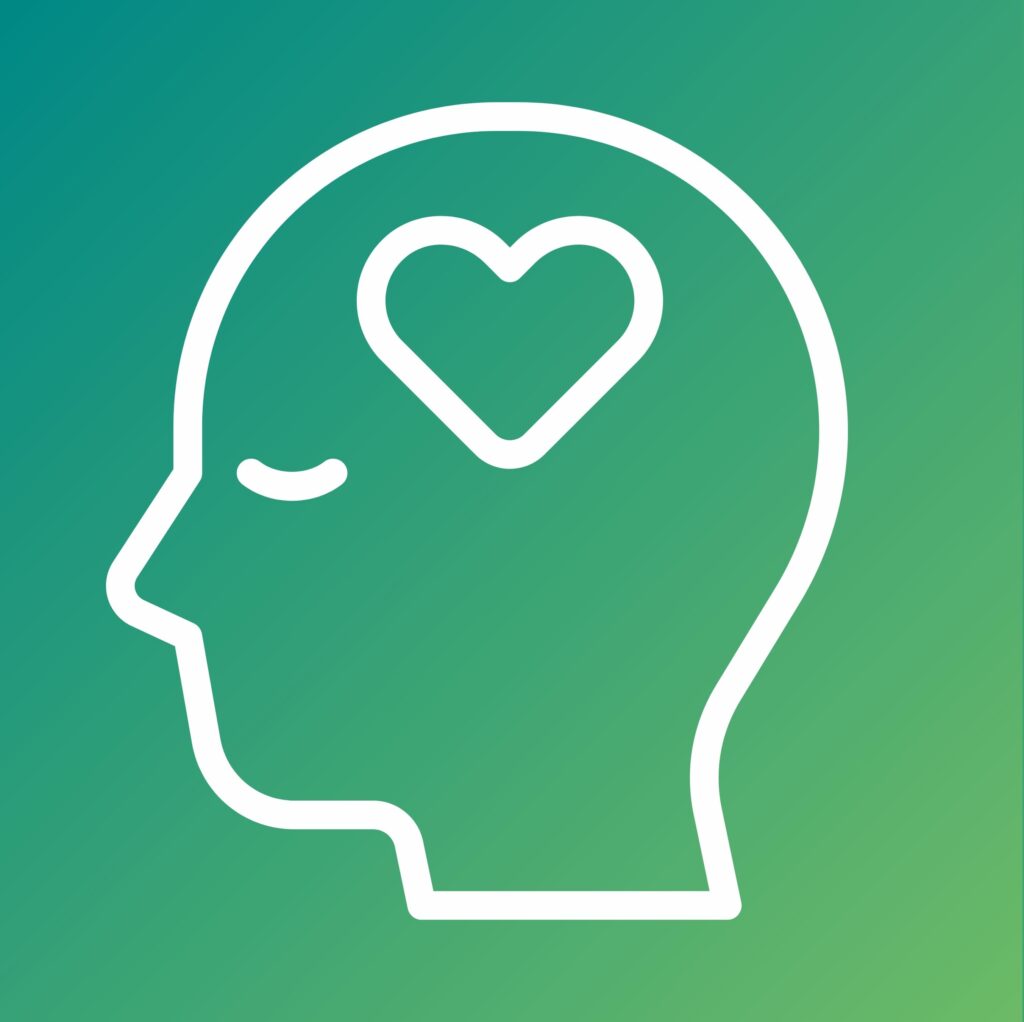
Mental health benefits
Spending just two hours a week in nature significantly reduces stress, anxiety, and depression, according to research published in Nature (2019). Exposure to green environments has been shown to lower cortisol levels, significantly reducing the body’s primary stress hormone.

Physical health improvements
Urban greenery encourages physical activity such as walking, jogging, or cycling, helping combat lifestyle diseases like obesity, diabetes, and cardiovascular conditions. The presence of trees and parks is linked to improved air quality, reducing respiratory problems.

Community connection
Shared green spaces foster social cohesion and a sense of belonging, helping to reduce loneliness and isolation, especially among vulnerable groups like the elderly.
Barcelona’s superblocks: The city has transformed car-dominated streets into vibrant pedestrian-friendly zones filled with greenery. This initiative has reduced air pollution by 25% in some areas and increased physical activity among residents. See Barcelona’s CitiesWithNature profile here.
High line, New York City: This elevated linear park repurposed an old railway track into a lush green corridor, attracting over 8 million visitors annually while improving mental well-being and local biodiversity. See New York’s CitiesWithNature here.
Tokyo’s green walls and rooftops: The city incentivizes green roofs and vertical gardens, providing mental relief and lowering urban heat islands, which improves overall livability.
Singapore’s therapeutic gardens: Designed specifically for mental well-being, these gardens are used for stress relief and dementia care, showcasing how tailored green spaces can address public health needs.
Del Carmen’s Mangrove Management Program: Demonstrated how environmental restoration can enhance both ecosystems and human health. The city created a science-backed plan that not only conserved mangroves but also improved the lives of locals. Key strategies included policy changes, environmental education, and raising awareness about the link between nature and well-being.
Utrecht’s NbS for urban resilience and wellbeing: The city promotes healthy urban living through a green and blue framework that integrates climate regulation, noise reduction, recreation, and cleaner air. The city’s tree policy addresses environmental challenges while providing green spaces for recreation, contributing to the physical and mental well-being of residents.
Human health and well-being are inextricably linked to the health of the natural world. International scientific assessments, including the IPCC and IPBES, emphasize that achieving sustainability requires halting and reversing biodiversity loss. The IPBES further claims that sustainable goals will not be achieved without a ‘transformative change’ including an increase in ‘awareness of connectivity in the environmental crisis and new norms regarding interactions between humans and nature’.
It’s now widely acknowledged that we are facing a triple planetary crisis caused by humans’ use of Earth’s resources. Large-scale political, economical, social and cultural shifts are needed to meet the challenges we face in addressing climate change, biodiversity loss, and pollution emergencies. The principle of nature connection can be applied at subnational and local levels to foster nature-positive change, enabling communities to lead meaningful, healthy, and happy lives.
Cities and regions with strong ties to nature can drive sustainable development by aligning the Global Biodiversity Framework (GBF) Targets and the Sustainable Development Goals (SDGs). Prioritizing long-term interventions and collective action to protect urban biodiversity is essential to prevent irreversible harm to the natural systems we rely on.
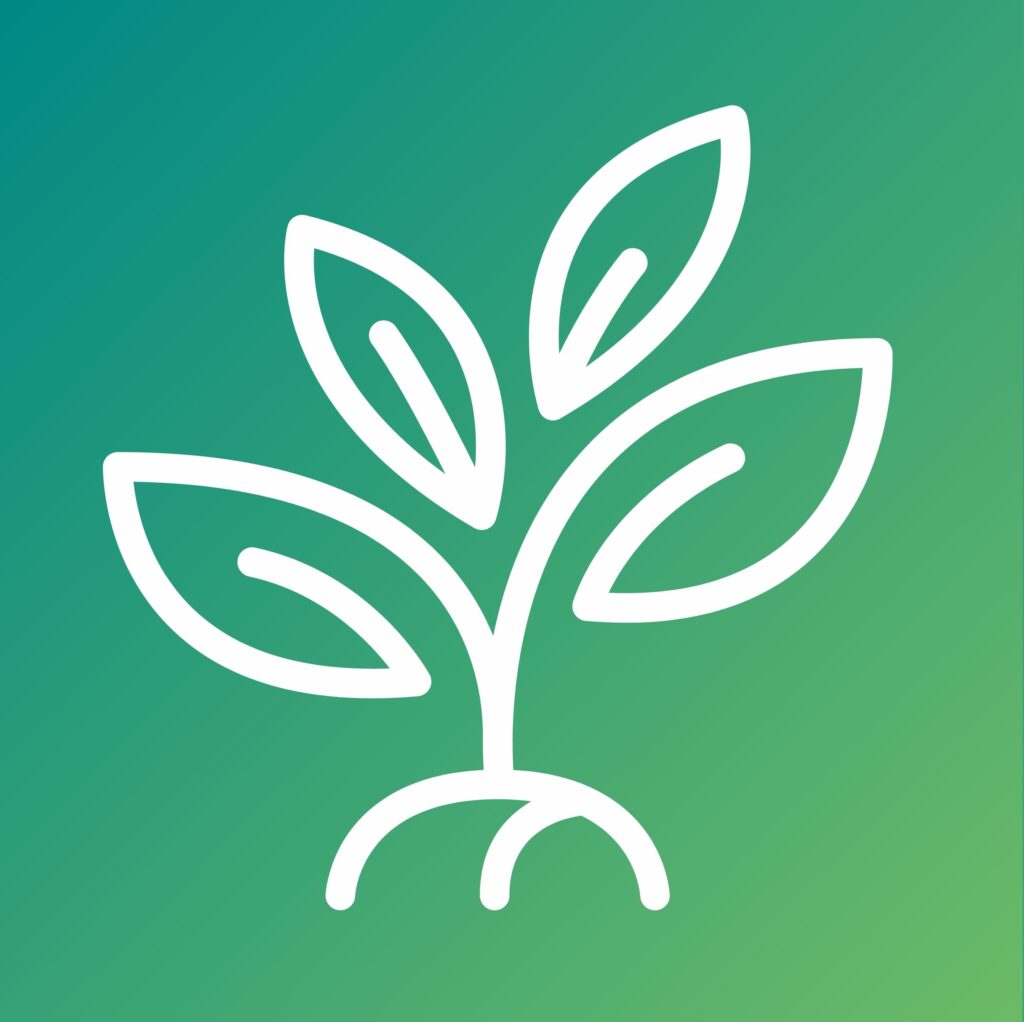
Create green infrastructure
Expand urban parks, plant trees, and invest in green roofs and walls.
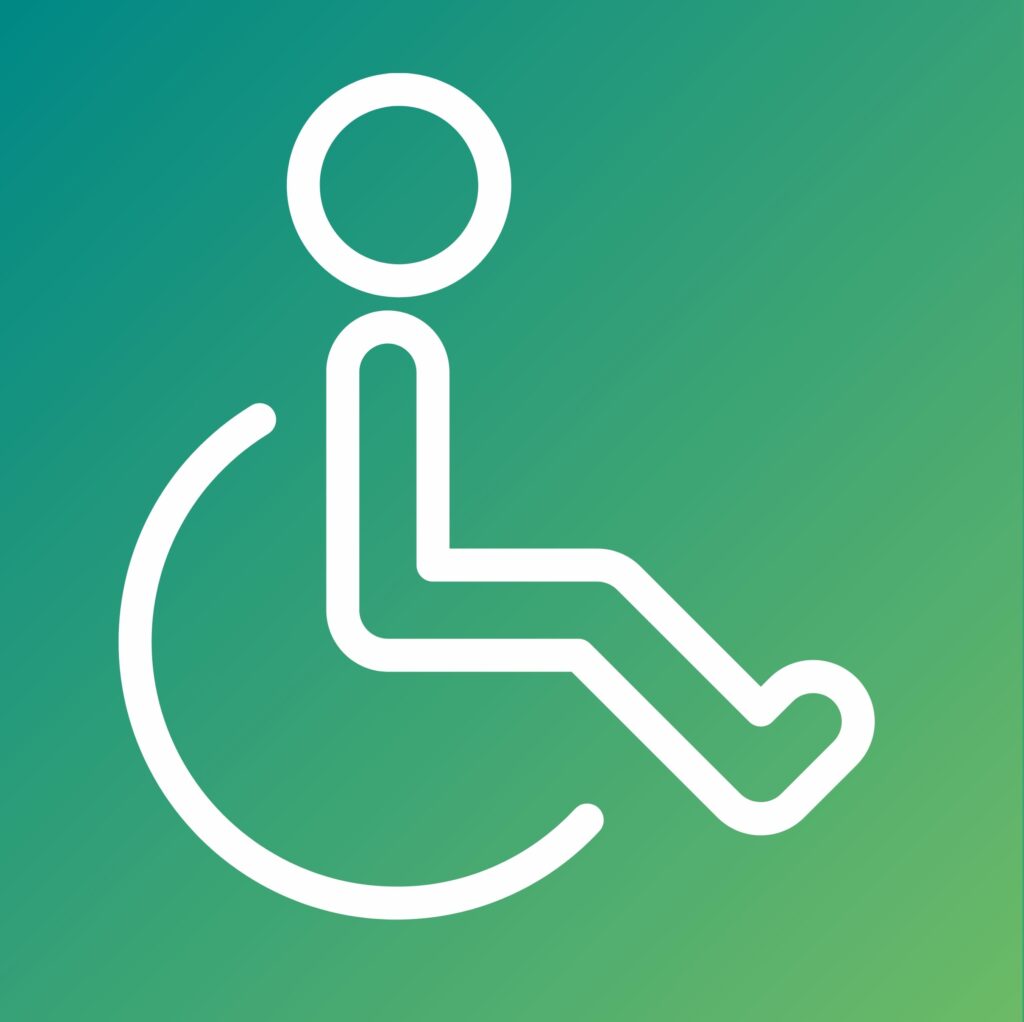
Prioritize accessibility
Ensure green spaces are safe, inclusive, and accessible to all, particularly in underserved communities.

Promote nature-based activities
Encourage outdoor recreation, gardening programs, and eco-education to foster deeper connections with nature.

Engage the community
Collaborate with local groups, schools, and businesses to co-create spaces that reflect community needs.
By embedding nature into the fabric of cities, we can nurture happier, healthier communities while addressing global challenges like climate change and biodiversity loss. Cities can transform into thriving ecosystems that serve both the planet and people.
To learn more about what cities are doing for nature visit our Action Platform.
While wetland ecosystems are increasingly being recognized as highly valuable natural assets that provide a wide range of benefits to urban communities, the services they provide are under immense pressure due to rapid urban expansion and human activity. Cities are uniquely positioned to drive local action to protect our wetlands.
Below are five key action areas for cities to mobilize urban communities for wetlands:
Integrate wetland management goals into municipal development plans, zoning regulations, and climate resilience strategies.
Advocate for wetlands as critical infrastructure in disaster risk management, emphasizing their role in flood mitigation, erosion control, and urban cooling.
Allocate funding for wetland restoration and maintenance as part of city budgets.
Highlight wetlands’ function as natural water filters, improving water quality for drinking and sanitation.
Educate communities about the importance of wetlands in regulating stream flow, preventing floods, and mitigating droughts.
Encourage partnerships between cities and water utilities to protect wetlands as vital water supply sources.

In the weeks to come, and during our meeting in Rome this February, I will work alongside Parties to build the trust and consensus needed to achieve Peace with Nature, ensuring that the goals and targets of the Kunming-Montreal Global Biodiversity Framework (KMGBF) translate into tangible action. Securing adequate and predictable financing will be central to our efforts, enabling transformative change for biodiversity while ensuring benefits for communities and ecosystems alike.
– said H.E. Susana Muhamad, Minister of Environment and Sustainable Development of Colombia and President of COP16.
Organize events such as guided wetland tours, birdwatching activities, and clean-up drives to connect urban communities with local wetlands.
Collaborate with schools and universities to use wetlands as outdoor classrooms for environmental education.
Celebrate World Wetlands Day by showcasing wetlands’ cultural, recreational, and ecological value through art exhibitions, storytelling sessions, and public campaigns.
Showcase wetlands’ role in carbon storage and their contributions to achieving climate targets at city and regional levels.
Promote the restoration of urban wetlands as natural climate buffers that reduce the impacts of extreme weather events.
Highlight their role in preserving biodiversity by creating habitat corridors that link urban green spaces and facilitate species migration.
Encourage eco-tourism and recreational activities like boating, fishing, and wetland safaris to generate local employment.
Support community-based initiatives in wetland restoration, creating jobs and fostering skills in conservation and sustainable resource use.
Showcase the agricultural and economic benefits of wetlands, such as fisheries, fertile soils, and natural resources, as integral to urban food security and poverty reduction.

Opinion piece by Gareth Presch, CEO, World Health Innovation Summit
Climate change is the single biggest health threat facing humanity. The impacts are already harming health through air pollution, disease, extreme weather events, forced displacement, food insecurity and pressures on mental health. Every year, environmental factors take the lives of around 13 million people. Over 90% of people breathe unhealthy levels of air pollution, largely resulting from burning fossil fuels driving climate change. This is a major problem, especially in urban areas. In 2018, air pollution from fossil fuels caused $2.9 trillion in health and economic costs, about $8 billion a day.
The potential of urban green and blue spaces to generate better health and well-being is clear. Countries around the world are adopting Green Social Prescribing. Green social prescribing is the practice of supporting people to engage in nature-based interventions and activities to improve their mental and physical health. Green social prescribing includes both what is known as green and blue activities. These could include local walking schemes, community gardening projects, conservation volunteering, green gyms, open water swimming or arts and cultural activities which take place outdoors. These activities may be ‘prescribed’ by link workers (and other trusted professionals) alongside other forms of support, for example, referrals to support housing or finances – based on the needs and circumstances of each individual (Global Social Prescribing Alliance).
There are numerous known benefits associated with increased exposure to urban nature. This includes health and well-being benefits, such as:

e.g. directly, through reduced air pollution and cooling effects, or indirectly, through increased opportunities for physical activity

e.g. stress relief or reducing harms such as noise

e.g. support of urban nature for social contact and cohesion

Finland is leading the way with clean cities and towns based on the recent 2023 World Air Quality Report by IQAir. Indeed, the towns of Sodankylä, Utsjoki and Kuusamo in Finland came out as being the least polluted in the world compared with more than 7,800 different places world wide. The concentrations of small particles in the air were measured in 134 different countries and regions in 2023. According to the report, only seven countries fell below the air quality recommendations set by the World Health Organization (WHO) for the concentration of fine particles. According to the organization, the annual average value of small particles in the air should be less than 5 micrograms per cubic meter. In addition to Finland, Estonia, Iceland, Australia, New Zealand, Mauritius and Grenada fell below the limit. In a comparison of over a hundred capital cities, Helsinki ranked in the top ten in terms of air quality, but even fewer fine particles were measured in the air of the capital cities of Estonia, Iceland, Australia and New Zealand, for example. The most polluted air was in Bangladesh, Pakistan and India. The most polluted capital cities were Delhi in India and Dhaka in Bangladesh.
Ninety-nine percent of the world’s population breathes air that does not meet the limit values set by the WHO and can be harmful to health and air pollution causes seven million premature deaths every year.
With 55% of the world’s population living in urban areas and an additional 52.5 billion urban residents expected in the next 30 years, and with 65% of SDG targets being relevant to cities, it’s no surprise the battle for sustainable development will be won or lost in cities
A healthy, thriving natural environment is vital for creating resilient urban places. Cities were on the frontline of the COVID-19 pandemic. The UN’s Report on COVID-19 in an Urban World (2020) noted that 90% of reported cases at that time were in urban areas. While urban density was found not in itself to be a decisive factor in the transmission of the virus, inequality, inadequate housing, strained health systems, inadequate water and sanitation services and pollution made certain urban areas vulnerable. The pandemic calls for a renewed emphasis on a just and green urban transition, and a renewed focus on addressing inequalities in cities and by promoting nature in cities we can see benefits for citizens.
Image reference: Lancet Planetary
The climate crisis urgently calls to accelerate the shift towards renewable sources of energy. The way cities are planned and managed has a profound impact on energy demand which impacts our health and nature. Compact, well-planned and managed cities, with non-motorised mobility options, green public spaces and natural cooling/temperature regulation measures tend to have below national levels of energy consumption. These transitions will support our health and well-being.

As health becomes far more important in determining investment we understand that when health is compromised so is our economic growth. At the Annual Investment Global Conference 2023 (ref: AIM Report) in Abu Dhabi last year I ran a workshop for the World Association of Investment and Promotional Agencies highlighting the opportunities to invest wisely in health and wellbeing which would deliver long-term economic returns. This was followed up by the COP28 declaration “Healthy Planet, Healthy People” which calls on the health/public sector to support the SDGs with a 1% commitment from the sector’s pension funds (WHS – not for profit fund). We’re now seeing these new models of healthcare that are focused on the environment and nature ultimately preventing disease while supporting economic growth (New WHIS ESG – Health, Climate Place Based Impact Model). As a result, new opportunities are emerging through partnership working – the establishment of Ecogreen Green Capital (African Focused – Great Green Wall of Africa Foundation) at COP28 and a new fund with the Commonwealth Pacific Climate Fund that will support the Commonwealth’s Small Island Development States for example.
We must plan and manage our cities in a way that simultaneously accelerates the achievement of SDGs and responds to global megatrends.

Image: COP28 Declaration & Ecogreen Capital Launched
The UN 2023 Water Conference – formally known as the 2023 Conference for the Midterm Comprehensive Review of Implementation of the UN Decade for Action on Water and Sanitation (2018-2028) – took place in New York, from 22-24 March 2023, and was co-hosted by Tajikistan and the Netherlands, with the UN Department for Economic and Social Affairs (UN DESA) as Secretariat. To catalyze action, the Conference sought voluntary commitments from Parties to the Water Action Agenda, to urgently scale up action to address the water and sanitation crisis and ensure equitable access to water and sanitation for all (Sustainable Development Goal 6).
“This is more than a conference on water. It is a conference on today’s world seen from the perspective of its most important resource.”
– UN Secretary-General Antonio Guterres
The Conference managed to generate more than 700 commitments aimed at driving transformation towards a water-secure world, which now form part of the Water Action Agenda, representing the global community’s resolve to address the water challenges through a more coordinated and results-driven approach.

On 24 March, ICLEI through CitiesWithNature and RegionsWithNature, convened an online side-event as part of the conference titled, “CitiesWithNature and RegionsWithNature: Connecting Water and Nature to accelerate local and regional resilience”. The side-event took place in line with the UN Water 2030 Conference which was held in New York with the aim of accelerating action towards the achievement of SDG6.
The aim of this session was to: connect the agendas of water and nature for accelerated local and regional action, building momentum towards the achievement of SDG 6 & 11; provide a platform for cities and regions to connect and share best practices and lessons learnt on water and nature; and promote local and regional resilience actions from leading CitiesWithNature and RegionsWithNature representatives.
To this end, the session, moderated by Stefania Romano – Global Coordinator, CitiesWithNature and RegionsWithNature – showcased examples of the interconnections between biodiversity and water and of different biodiversity management issues and/or challenges which are relevant to the water agenda. These cases, summarized below, were presented by CitiesWithNature cities and RegionsWithNature regions and speakers from Regions4 and other subnational governments – as CitiesWithNature and RegionsWithNature are important platforms for showcasing best practices and case studies that can be scaled out to other cities and regions.

Caroline Daguet
Conservation Biologist, Ministry of the Environment, Fight against Climate Change, Fauna and Parks
Government of Quebec
The littoral zone of Saint Pierre is located in the St Lawrence river in Quebec Province, in Canada. The site is a wetland of importance and both classified as a Ramsar site and UNESCO Biosphere Reserve. The fertile land has historically been used for corn, and more recently soybean, agriculture which has resulted in drainage of the river, habitat loss, shore erosion, siltation, pollutant leaching as well as invasive alien species taking over. Given the extent of the threat to some species, a moratorium was placed on sport and commercial fishing of the yellow perch (Perca flavescens) in 2012.
The sustainable management project of the Lake Saint-Pierre littoral zone is aimed at establishing sustainable agriculture to protect the lake’s ecosystem. The project has led to the development of a floodplain intervention strategy that fosters sustainable and adapted agricultural practices while maintaining the fragile ecosystem of the lake and supporting the restoration of priority sites.
The success of the project can be attributed to the inclusion and collaboration between academia and government ministries and a commitment to involving farmers from the beginning of the project. The project not only focused on crop, soil and water studies, but also included wildlife research and monitoring projects focusing particularly on fish, birds and insects. In addition, the project focused on the governance of the ecosystem – concluding that it is critical to involve regional and local government authorities and indigenous communities in the process.
This case study forms part of the Regions4 database and can be viewed on the RegionsWithNature platform. Quebec has been involved in the database since its launch in 2016 and has been contributing to knowledge-sharing and learning from other subnational governments. Quebec is also a founding member of RegionsWithNature, officially launched in Montréal in Québec at the CBD COP15 in 2022.

Flora Aguilera
Communications, Ministry of Climate Action, Food and Rural Agenda
Government of Catalonia
The Litoral Baix Empordà is a special protected marine area and site of community importance located in Costa Brava, a coastal region of Catalonia in north-eastern Spain. To facilitate co-management of the Litoral del Baix Empordà, the Government of Catalonia formed a board to create a permanent space of participation where proposals can be debated and concretized to improve the management and organization of maritime uses and activities in the area.
The governance model is particularly focused on making these uses and activities more compatible with the area’s natural heritage. Specifically, through stakeholder engagement, the model aims to ensure the conservation and improvement of the natural, cultural and landscape heritage of the area to both safeguard its socioeconomic activity and protect its cultural heritage.
The success of this model has been its bottom-up approach with stakeholders, such as the scientific community, civil society, government administrations, and all critical stakeholders from the blue economy sector. This has created a safe and trustworthy environment that has enabled addressing common problems and discrepancies, ultimately benefiting the protected area. As a result, environmental management has shifted from maintenance and prevention to an Action Plan that is collaboratively designed. Best practices based on this co-management project is also available on the Regions4 database and the RegionsWithNature website.

Julia Murphy
Deputy Chief Sustainability Officer
City of San Antonio Office of Sustainability
San Antonio is a CitiesWithNature pioneer city located in Texas state, USA. As a coastal state, Texas is surrounded by water, but its inland cities experience significant water shortages. Moreover, the Texas Water Board’s projections show that the state’s water supply will decline by 18% between 2020 and 2070. One of the main causes of this decline is the depletion of aquifers from pumping for industrial use, occurring alongside land-use change as a result of agriculture and ranching.
Another concern for water supply across the state is population increase, which is expected to rise to 73% between 2020 and 2070. This will be exacerbated under future climate change, as the state’s already hot climate becomes even hotter, and the City of San Antonio in particular will experience reduced rainfall, more frequent and longer droughts, and reduced water and food security.
Beyond needing drinking water and water for household use, this resource is also of economic importance, given that the San Antonio River is a tourist attraction, with 11.5 million people visiting the San Antonio River Walk annually, providing 31,000 local jobs. San Antonians understand the value of water and its conservation has become entrenched in the city’s culture. Conservation – water that is not used – has been considered a water supply source since 1993.
However, water conservation is contingent on access to open land and the space required for rainfall to replenish aquifers. Since nearly 95% of land in Texas is privately owned, the regional and city governments have had to work closely with landowners to protect their land for water conservation through the Texas Agricultural Land Trust.
For the past 20 years, San Antonians have been voting to tax themselves through sales tax initiatives to conserve open land on usually privately owned land over the main aquifer to protect the water source. Water conservation is further achieved through education, incentives, and reasonable regulation. Read more about the statewide investment into water conservation that will be voted on later in 2023, here.

Ernita van Wyk
Senior Professional Officer: Social-ecological Systems
ICLEI Africa
Johannesburg is the biggest city in South Africa and also the economic hub of the country. As a result of the long-term decline of water sources in South Africa’s cities, and projected future climate change impacts, the City of Johannesburg has responded to its current water challenges by investing in two tools: The City of Johannesburg water security strategy (city-wide); and the City of Johannesburg pilot catchment management plan (smaller scale).
The COJ water security strategy
A water secure Johannesburg, as per the UN Water definition, would mean: The City of Johannesburg will have the capacity to safeguard sustainable access to adequate quantities of acceptable quality water for sustaining livelihoods, human well-being and socio-economic development and preserving ecosystems.
To achieve this, the City government co-produced a strategy with relevant stakeholders to secure water supply; manage water demand and losses; ensure access to safe, reliable and equitable water services; promote resilient, liveable and sustainable urban water environment; manage the water system’s knowledge and data; nurture a water conscious society; and achieve coordinated good water governance. A working group was created under each theme, which has culminated in 67 actions for the City to take. A key part of the strategy’s approach has been to identify how different municipalities and sectors work with the same water source, to ensure effective cross-sectoral collaboration based on an integrated approach to water management.
The COJ pilot catchment management plan (Jukskei River)
The aim of this plan was to develop a tool that promotes integrated catchment planning and management practices, linking various catchment aspects in an integrated manner, at the sub-catchment scale. This includes integrating land use, river health and stormwater management for Johannesburg’s Jukskei River catchment. The Jukskei River catchment experiences similar issues to other urban catchments, including: a demand for settlement that leads to encroachment into river courses; drought; increased flooding; pollution; aging infrastructure; degrading open spaces; poor amenity value; and downstream obligations, given that the Jukskei catchment is located relatively upstream.
The catchment management plan was based on the “water-sensitive city” paradigm, which states that municipal water services are provided against the backdrop of challenging environmental impacts. In response, the plan used a hydrological model to guide extensive stakeholder engagement. Through this process the City realized the significant opportunity for rainwater harvesting and the necessity to start making the catchment area more “spongy” through nature-based solutions – to improve the replenishment of aquifers but also to reduce flooding. Lessons learned and best practices can be found in this CitiesWithNature Catchment Management in Your City Guide, which was launched in this UN Water conference side-event.
The side-event concluded around the topic of advocacy for water – a universally understood rallying point for mobilizing actions, particularly when climate change is not accepted as a point of advocacy. The panel also emphasized the need for a stronger connection between water and ecosystems, and connecting that with human health.
UN Biodiversity COP15 and Water
Water conservation is included in the newly adopted Kunming-Montreal Global Biodiversity Framework (GBF), for example, Target 3 calls for the effective conservation and management of at least 30% of terrestrial and inland water, especially areas of particular importance for biodiversity and ecosystem functions and services, and Target 2 calls for the restoration of 30% of degraded terrestrial, inland water, and coastal to enhance biodiversity and ecosystem functions and services, ecological integrity and connectivity by 2030.
Additionally, Target 12, which is specifically aimed as cities, calls for significant increases in the area and quality and connectivity of, access to, and benefits from green and blue spaces (referring to water bodies such as wetlands, rivers, mangroves etc) in urban and densely populated areas sustainably, by mainstreaming the conservation and sustainable use of biodiversity, and ensure biodiversity-inclusive urban planning, enhancing native biodiversity, ecological connectivity and integrity, and improving human health and well-being and connection to nature and contributing to inclusive and sustainable urbanization and the provision of ecosystem functions and services.
Water targets on the CitiesWithNature Action Platform
The CitiesWithNature Action Platform provides a platform where cities can make their commitments for nature (as referenced in Plan of Action action area 7) and set local targets to contribute to the GBF targets within the framework of the National Biodiversity Strategy and Action Plan of their country (NBSAP). The Action Platform is aligned with the 2030 Kunming-Montreal Global Biodiversity Framework targets, and provide several options for taking action and making commitments at the local level that relate to water such as “Restore and/or rehabilitate terrestrial, freshwater and coastal ecosystems”; or “Reduce water pollution by biocides and excess nutrients from domestic and industrial sources to protect ecosystems and people’s health.”

The UN Convention on Biological Diversity’s 15th Conference of Parties (COP15) from 7 to 19 December 2022 in Montréal provided the ideal opportunity for the CitiesWithNature and RegionsWithNature global partnership initiatives to highlight their notable progress in recent months.
CitiesWithNature has particularly experienced significant growth since its launch in 2018. During the 7th Summit for Subnational Governments and Cities at COP15, 36 new cities and five new global partners were welcomed to the CitiesWithNature global partnership initiative, which is recognized by the UN Secretariat of the Convention on Biological Diversity as the platform where subnational governments, cities and other local authorities report on their actions and voluntary commitments to the global biodiversity framework.
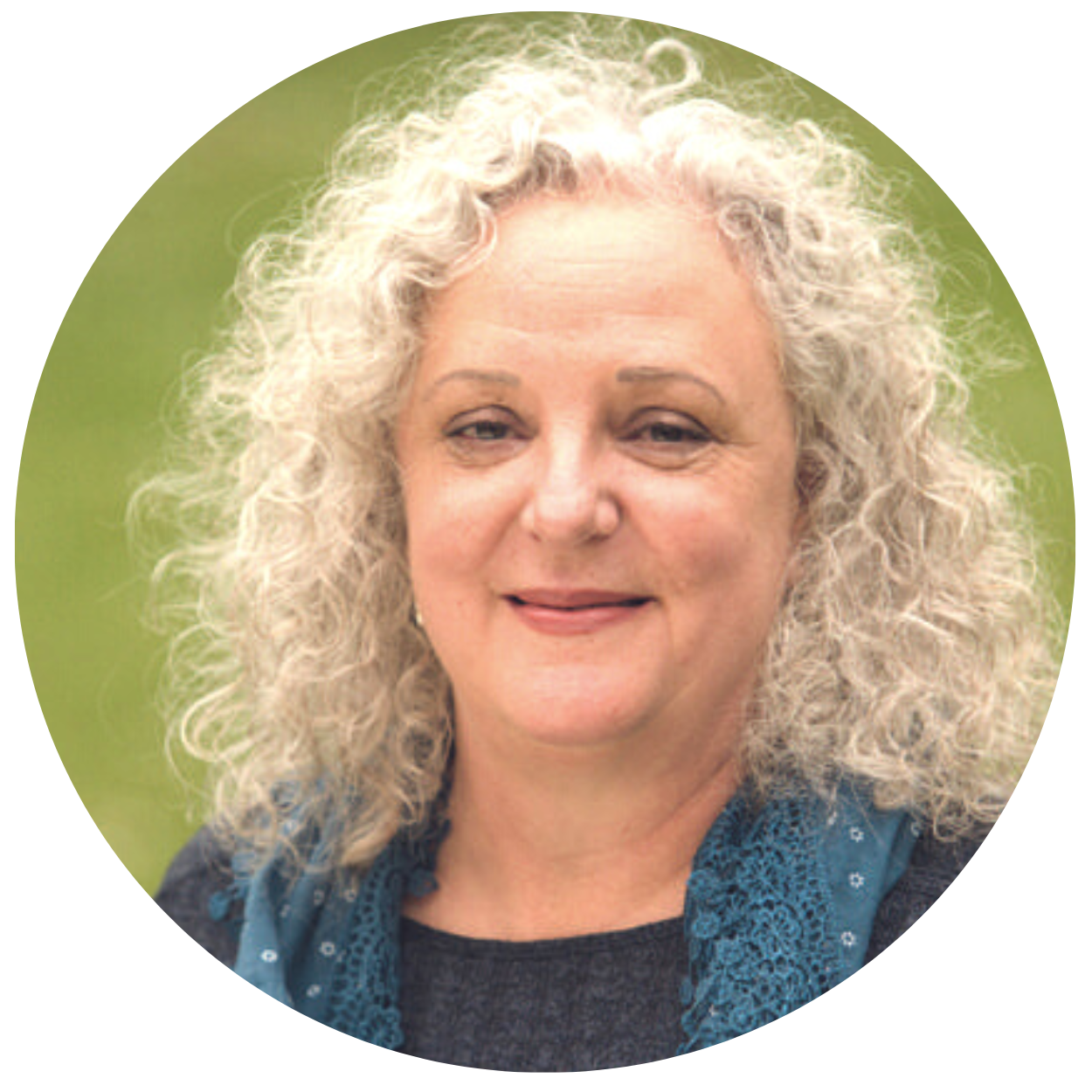
“By joining CitiesWithNature and using the Action Platform, cities across the world can commit ambitious actions that contribute to national and global biodiversity and nature goals, and easily track their achievements and actions individually and collectively. We strongly encourage all cities and regions, large and small, no matter where they are on their sustainability journeys, to join us and ensure we bring about the urgent transformative change that is needed!”
Kobie Brand, Deputy Secretary General of ICLEI - Local Governments for Sustainability and Regional Director of ICLEI Africa.
The sister platform to CitiesWithNature – RegionsWithNature – which focuses on subnational governments at the regional level and across urban-rural linkages, was officially launched on 12 December at the 7th Summit. During the CitiesWithNature and RegionsWithNature Announcement Ceremony, eight new subnational governments and two new global partners were welcomed on board.
“Launching RegionsWithNature, together with some of the most powerful subnational leaders in the world, sends a powerful signal to the planet, and especially to the Parties of the Convention. Subnational governments are committed, they’re ready, and they’re already playing an important role in implementing concrete actions on the ground.”
Jordan Harris, Executive Director of Regions4

New cities, regions and partners joining CitiesWithNature and RegionsWithNature at the 7th Subnational Governments and Cities Summit


NEW CITIES
City of Oakland, USA
City of Santa Monica, USA
Lake County, USA
City of Carbondale, USA
San Francisco, USA
City of Boulder, USA
City of Boston, USA;
Sainte-Anne-de-Bellevue, Canada
City of Laval, Canada;
Cartagena das Indias, Colombia
Autonomous Decentralised Municipal Government of Pastaza Cantón, Colombia
Alcaldía de Barranquilla, Colombia
Metropolitan Area of Aburrá Valley, Colombia
City of Roseau, Dominica
City of Portsmouth, Dominica
City of Utrecht, Netherlands
City of Paris, France
City of Marseille, France
Iringa Municipal Council, Tanzania,
Kisii County, Kenya,
Tswelopele, South Africa
Waterberg, South Africa,
Kampala, Uganda
Mukono Municipal Council, Uganda,
The District Council of Black River, Mauritius,
Hargeisa Municipality, Somalia,
Chengdu, China
Huzhou, China
Jiaxing, China
Kunming, China
Nanyang, China
Shenzhen, China
City of Nagoya, Japan
Chiang Mai, Thailand
Caygan de Ouro, Philippines
Mashhad Municipality, Iran

NEW REGIONS
La Rioja, Spain
Basque country, Spain
Aland islands in Finland
California in USA
Rio de Janeiro, Brazil
Paraná in Brazil
Guanajuato, Mexico
Jalisco in Mexico
New partners
The United Nations Economic Commission for Europe (UNECE)
WHO (World Health Organization)
CC35 (Capital Cities of the Americas)
CitiesWithNature and RegionsWithNature:
The Convention on Migratory Species (UN CMS)
R20 (Regions of Climate Action)
"Thank you for being part of the two Platforms, which give us the space to act together. As Nature is our home so are CitiesWithNature and RegionsWithNature."
Stefania Romano, Global Coordinator of CitiesWithNature and RegionsWithNature

Knowledge sharing
CitiesWithNature and RegionsWithNature provide educational resources to ensure that cities are equipped with the knowledge and understanding of natural resources and ecosystems required to ensure that these issues are included in the cities and regions’ goals and planning.
One of the primary goals of these platforms is to keep city officials updated on best practices and lessons learned about important biodiversity topics, predominantly through the Tools and Resources section, but also by connecting cities and regions with one another. Connecting subnational and local governments facilitates much-needed collaboration across all levels of government to achieve the biodiversity goals as captured in the newly adopted Kunming-Montreal Global Biodiversity Framework.
“We need to strengthen our collaboration, our network, our initiative in conservation to maximize the solutions which work, through the platforms CitiesWithNature and RegionsWithNature.”
Benoit Charette, Minister of Environment, the Fight against Climate Change, Wildlife and Parks Québec

With 373 scientifically robust resources – including reports on topics such as nature-based solutions, ecosystems, health and well-being, and biodiversity governance, the Tools & Resources section empowers cities and regions with current and updated information on best practices.
CitiesWithNature offers Guides that package science-based information in a way that is easy to understand and accessible to cities. During COP15, CitiesWithNature announced that its Guide on light pollution, created in collaboration with the UN Convention on Migratory Species, will be launched soon.
In 2022, CitiesWithNature created its first Community of Practice – which is a platform aimed at connecting cities to learn from one another, by predominantly utilizing its chat function. The platform also aims to bring together the broader community of researchers and practitioners to connect with cities to solve biodiversity-related challenges. The first Community of Practice was launched for coastal cities, in collaboration with the Western Indian Ocean Marine Science Association (WIOMSA).
Knowledge sharing has been facilitated through a range of tools and activities including targeted campaigns, news and updates, as well as webinars to empower cities with the knowledge of how to use the Action Platform. CitiesWithNature also uses its newsletter – the Buzz – to keep cities updated with current events, news and important information, while also profiling the achievements of CitiesWithNature cities and RegionsWithNature regions in achieving their biodiversity targets.
During the 7th Summit for Subnational Governments and Cities, Regions4’s Case Study Database, one of RegionsWithNature’s new tools, was launched. The Database is a freely accessible open source online database that showcases the subnational government experience. Currently eight case studies from six regions – Québec, Catalonia, the Basque Country, Lombardy, Jalisco, and Aichi – are available in Spanish, French, and English. Its goal is to build and develop capacities at the regional level of government, transforming on-the-ground knowledge into best practice learning opportunities in support of the implementation of the Kunming-Montreal Global Biodiversity Framework.
Monitoring and reporting
While RegionsWithNature was only recently launched, CitiesWithNature already has an established range of tools for monitoring and reporting on cities’ biodiversity actions. Notably, the CitiesWithNature Action Platform is used to feed local and subnational level actions for biodiversity into national biodiversity planning. The action areas, commitments, actions and targets are all linked with the Sustainable Development Goals and Global Biodiversity Framework targets to ensure they align with national priorities.
This is supported by the Nature Pathway – guiding cities step by step to promote and mainstream nature into their policy, planning and actions.
During COP15, CitiesWithNature also launched the digitized version of the City Biodiversity Index, also known as the Singapore Index, which is based on the updated version of the CBI handbook. The automated calculations of this digitized version help cities establish a baseline for biodiversity to further monitor and report on their biodiversity, for example by making commitments and setting targets on the Action Platform.
Through this monitoring and reporting function, CitiesWithNature also plays a role in mobilizing the subnational and local governments Major Group by leading and providing support to critical advocacy events such as the 7th Summit and its associated Pavilion at COP15.

“CitiesWithNature and RegionsWithNature are recognized in the Plan of Action as being the place where subnational governments and cities can report on their commitments towards contributing to national and global biodiversity targets and track their progress, and I am really hoping to see many more commitments made on these platforms.”
Ingrid Coetzee, Director: Biodiversity, Nature & Health, ICLEI Cities Biodiversity Center
To encourage cities to make use of the Action Platform, CitiesWithNature employs a reward system that acknowledges and celebrates cities’ commitments. This includes certificates, reward badges and rankings that appear on City Profiles and can be downloaded as pdfs for cities to share and keep track of their progress.
In addition to all the functionalities mentioned above, CitiesWithNature will also launch its Community and Research Hubs in the near future to further connect cities, researchers and practitioners.
Watch the ICLEI Cities Biodiversity Center video featuring voices from across the world calling for cities to become CitiesWithNature here.
Center of Excellence launched at COP15
The ICLEI-Kunming International Center of Excellence for CitiesWithNature, jointly initiated by ICLEI and Kunming City, was formally established at a signing ceremony during the 7th Summit on 12 December. The center is committed to be an important platform for demonstration, peer learning and creating partnerships between Chinese and international cities on nature conservation and biodiversity. It will also help enhance local governments’ technical capacity and encourage local commitment and actions for the implementation of the newly adopted Kunming-Montreal Global Biodiversity Framework. The activities of the center will run in close collaboration with ICLEI Cities Biodiversity Center based in Cape Town, South Africa.
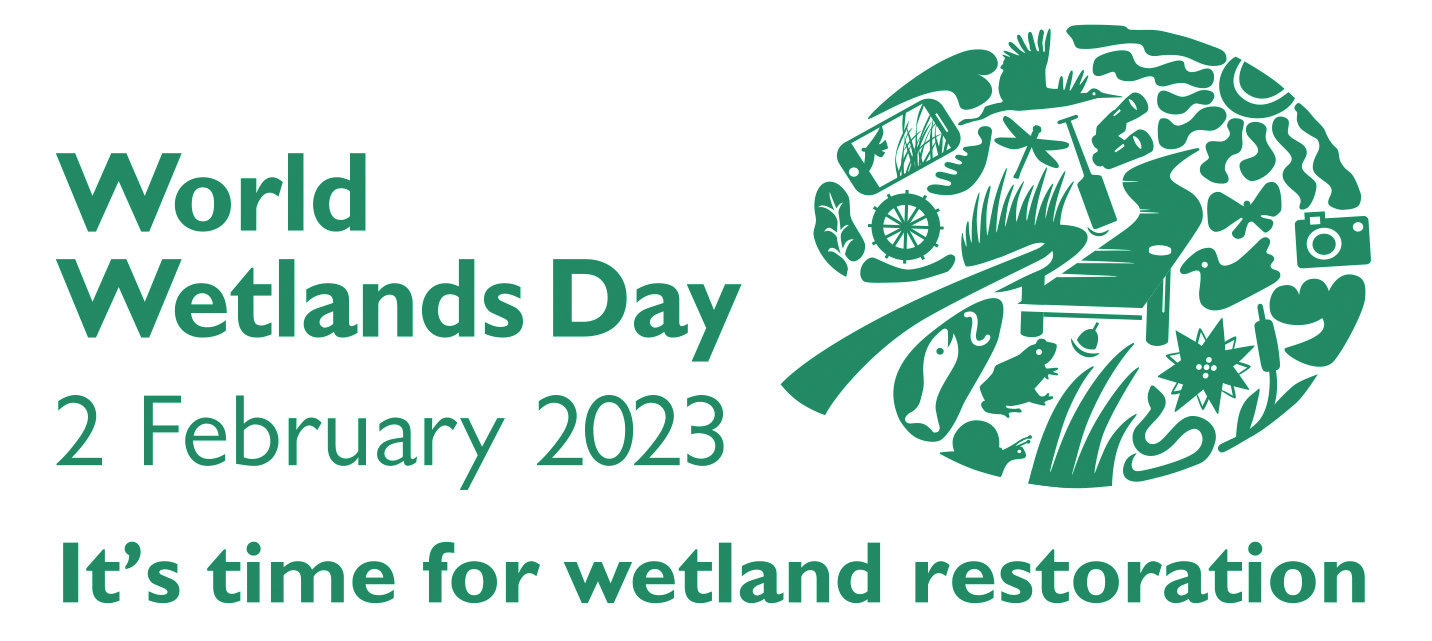
Despite being the world’s most productive ecosystems and crucial to human well-being, wetlands continue to experience extremely high rates of decline and degradation: an estimated 35% of wetlands have been lost since the 1970s. To prevent further losses and secure the necessary ecosystem services that wetlands provide – such as water purification, climate change mitigation, food and building materials, and flood control – the restoration of these important inland water and coastal systems are urgently required.
Ecosystem restoration has increasingly become a priority for scientists, politicians, officials and environmental activists in recent years as a critical approach to curb biodiversity loss and promote resilience to climate change. As such, the UN Decade on Ecosystem Restoration, a 10-year push to halt and reverse the decline of the natural world, was launched in 2020. Through this year’s Wetlands Day theme, the UN Convention on Wetlands is calling for global restoration efforts to include the rehabilitation of wetlands.
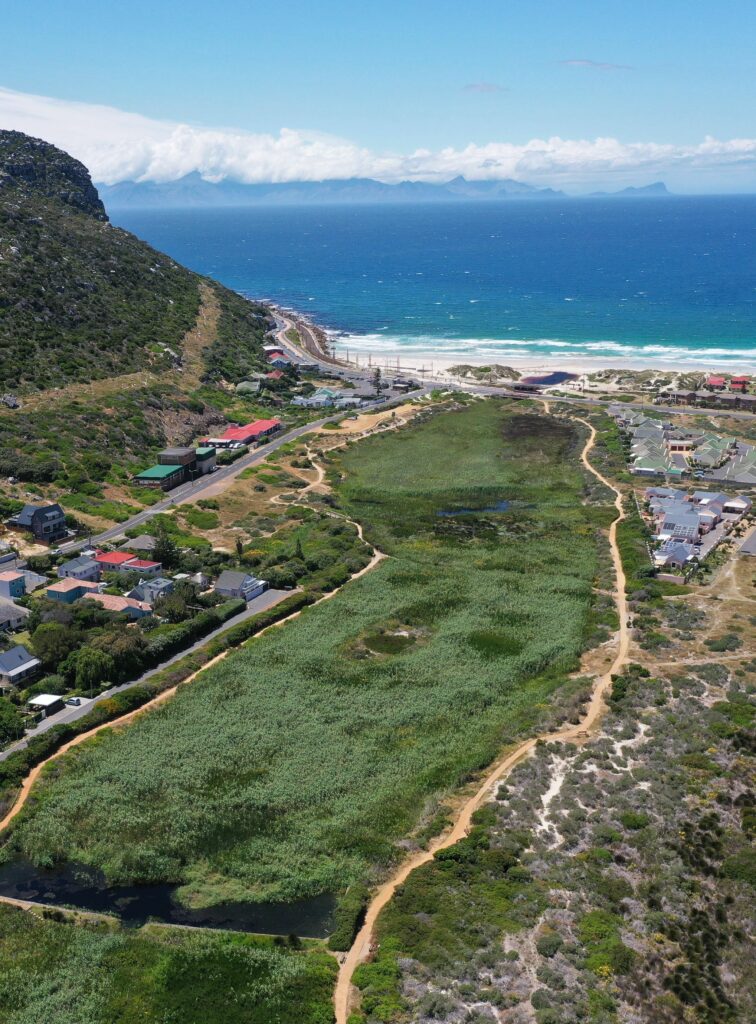
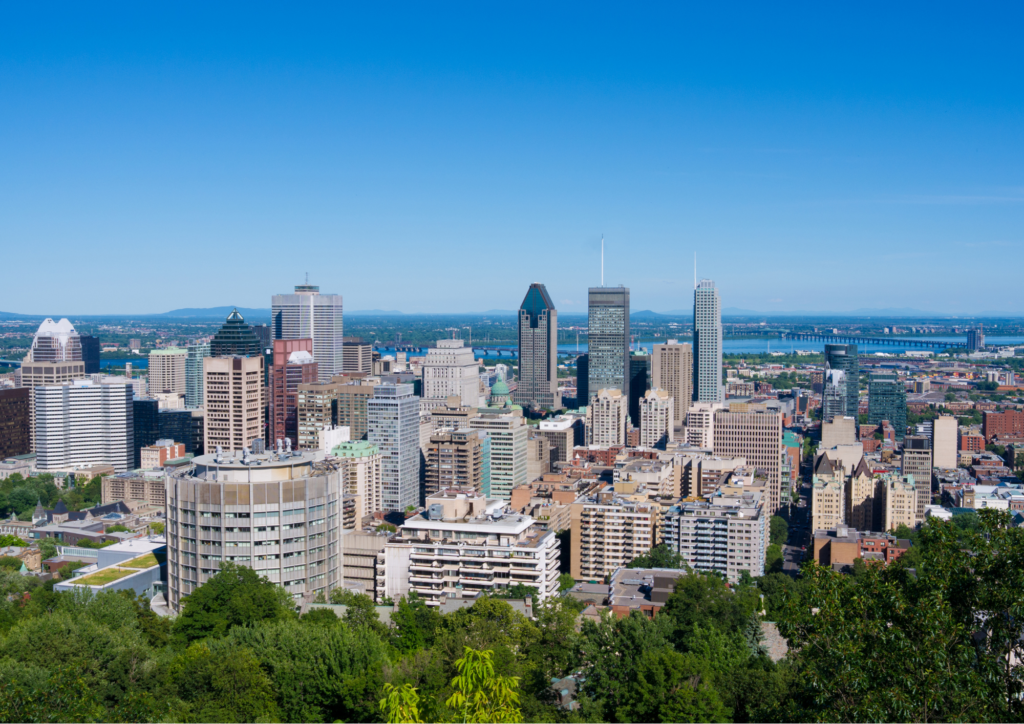
In 2022, urban wetlands were recognized as critical to human well-being at the UN Convention on Wetlands’ 14th Conference of Parties. During Ramsar COP14 in Geneva and Wuhan, Parties were called upon to take appropriate and urgent measures to achieve the goal of halting and reversing the loss of wetlands globally.
Also in 2022, the UN Convention on Biological Diversity’s 15th Conference of Parties in Montreal and Kunming witnessed the adoption of the Kunming-Montreal Global Biodiversity Framework, which includes under its Target 2 an aim that, by 2030, at least 30% of areas of degraded terrestrial, inland water, and coastal and marine ecosystems are under effective restoration.
The loss of wetlands noted above is particularly prevalent in cities. Urban wetlands are vulnerable to the adverse impacts of urbanization as they tend to be undervalued and therefore often converted or used as dumping grounds. However, while the challenges of urbanization to wetland health are profound, so too are the opportunities for wetland restoration.
As part of the newly adopted Kunming-Montreal Global Biodiversity Framework mentioned above, Parties adopted the decision titled Engagement with subnational governments, cities and other local authorities to enhance implementation of the post-2020 Global biodiversity framework and its accompanying revised Plan of Action on Subnational Governments, Cities and Other Local Authorities (2022-2030), which recognizes the vital role that cities and local authorities play in the implementation of the Global Biodiversity Framework – including by restoring urban wetlands and thereby contributing to Target 2. On the CitiesWithNature Action Platform, the CBD-recognized platform for cities to use for monitoring and reporting on their actions for biodiversity, the restoration and protection of urban wetlands can be recorded by Cities under Commitment 1 titled “Protect, Connect and Restore Ecosystems” and specified under two actions: “a) Restore and/or rehabilitate terrestrial, freshwater, and coastal ecosystems” and “(b) Increase protected areas.”
Globally, cities are increasingly acknowledging the importance of protecting and restoring wetland areas. To acknowledge cities’ significant contributions to take care of valuable urban wetlands, the UN Convention on Wetlands established the Wetland City Accreditation Scheme.
The Wetland City Accreditation (WCA) scheme was launched in 2015 – during the Ramsar Convention on the Conservation of Wetlands COP12 in Uruguay – with the aim of improving local authority or authorities’ work in conservation and wise use of wetlands. The accredited Wetland Cities are intended to act as models for the study, demonstration and promotion of the Convention on Wetlands’ objectives, approaches, principles and resolutions. Cities become candidates for accreditation by applying to the official call for applications posted here.
The WCA scheme aims to encourage cities in close proximity to and dependent on wetlands, especially Wetlands of International Importance, to highlight and strengthen a positive relationship with these valuable ecosystems, for example through increased public awareness of their importance and participation in municipal planning and decision-making.
During the Ramsar COP14 in 2022, the second triennium Wetland City Accreditation Awards Ceremony took place to celebrate the accreditation of 25 new cities (listed below). These cities have joined the already existing 18 accredited Wetland cities that have since been tasked to maintain their accreditation.
To further promote the conservation and wise use of urban and peri-urban wetlands, and to share city-level experiences among city leadership, the Roundtable of Wetland City Mayors first took place in 2019, where a Wetland City Network was established to continue the work of the accreditation scheme and enable cities to achieve more and learn from other Wetland Cities. The 2nd Roundtable of Wetland City Mayors will take place in June 2023, in Amiens, France.
The 2022 accredited cities are:
Sackville (Canada)
Sackville was built on/adjacent to saltwater marshes which had been dyked and drained in the 1600s to become freshwater “dykelands”. Since then the Town has undertaken many projects to restore, protect and utilize them, including creating legal restrictions which are supported by laws at all levels of government. The wetlands include the internationally recognized Sackville Waterfowl Park.


Hefei (China)
Hefei has 118,200 ha of wetland area, with a wetland protection rate of 76%. The city has invested in the protection of the Chao Lake area, protecting 10 wetlands covering a total of 100 square kilometers. This has significantly contributed to aquatic ecosystems, water security and quality, and wildlife habitat – up to 562 wetland plant species and 303 bird species. The City’s strategies include nine wetland education centers, wetland protection volunteers and science popularization to enhance residents’ relationship with the wetlands.
Jining (China)
Jining City is known as the “Canal Capital” for its abundant water resources, booming business activities and cultural exchanges. Jining wetlands cover an area of 158,800 ha, with the wetland protection rate reaching 77.38% as a result of the government’s commitment to wetland protection. Nansi Lake and the Grand Canal – designated as a Ramsar site in 2018 – attract millions of migratory birds every year.
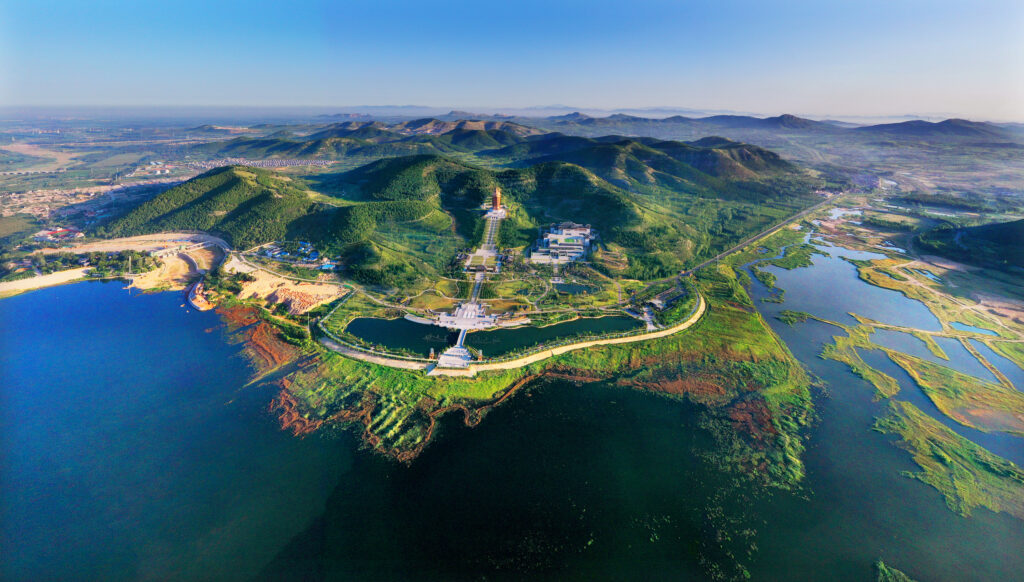

Liangping (China)
Lianping’s rivers, streams, lakes, reservoirs and small wetlands are protected by the City’s strategy of “comprehensive water management, wetlands nourishing the city”, and its adopted model of “small and micro wetlands construction with ecological conservation, pollution control, organic industry, and natural education”, to benefit the lives of communities surrounding the urban wetlands.
Nanchang (China)
Nanchang has a wetland area of 153,000 ha, which provides a major habitat for hundreds of thousands of waterfowl globally, and an important wintering place for Siberian white cranes. The City has protected 68% of its wetlands and restored more than 8,000 ha, enhancing the ecological functions of wetlands, the urban living environment, and the socio-economic development of the city.


Panjin (China)
Panjin’s wetland covers 249,600 ha, accounting for 60.8% of the whole area. Its wetland protection rate is 54.6%, with 124,000 ha of wetlands restored since 2018 – benefiting the value of rice, river crab, tourism and other wetland industries. Panjin’s coastal wetlands are home to 477 species of wild animals – including 78 species of national key protected wild animals – and a stopover or destination for millions of migratory birds, including the Saunder’s Gull, Red-crowned Crane and Western Pacific Spotted Seal.
Wuhan (China)
In Wuhan the Yangtze River (the third largest river in the world) meets its largest tributary, the Han River. Endowed with 165 lakes and 166 rivers, Wuhan has abundant wetland resources and a wetland rate of 18.9%. Ecological restoration is secured through legislative protection, ecological compensation, conversion of fish ponds to wetlands, restoration of degraded wetlands, and public participation.
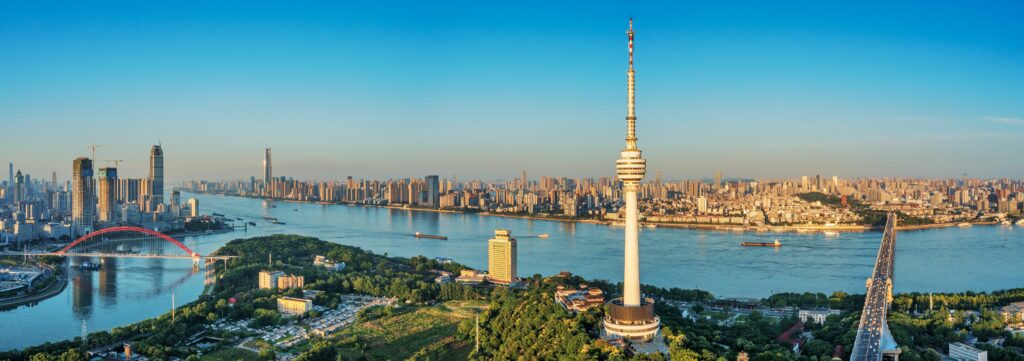

Yangcheng (China)
Yancheng has two Wetlands of International Importance and one coastal wetland World Natural Heritage Site. By 2021, the protection rate of natural wetlands in the city has reached 62%, and the “Yancheng Yellow Sea Wetland ecological restoration case” is renowned for its global nature protection in densely populated and economically developed areas.
Belval-en-Argonne (France)
The Belval-en-Argonne municipality joined forces with several nature protection associations (e.g. Birdlife France), to purchase the ponds of Belval-en-Argonne, which were designated a Regional Nature Reserve in July 2012. Major restoration work on the dykes and sluices has been carried out to better manage the water levels, and a large inventory of ponds and amphibians to create awareness of the site’s biodiversity has been created.


Seltz (France)
Seltz is a European town in the northern Bas-Rhin Department, with a population of 3,400 and home to the Seltz nature reserve: the Sauer Delta. This 486 ha site is remarkable for its botanical richness (including willow beds, mudflats and reedbeds), hydrology and landscapes, as well as ornithology.
Surabaya (Indonesia)
As a result of Surabaya City’s low elevation, many estuarine mangrove and wetland ecosystems have formed, amounting to 1.722,68 km2 of wetland ecosystem (76.51% of the total area 2.251,62 km2). These wetlands are important for bird species, particularly migratory seabirds and shorebirds in the East Asia-Australia Fly Away. Urban planning initiatives, in cooperation with community associations, are addressing challenges such as river and coastal pollution, seasonal water scarcity and urban flooding.
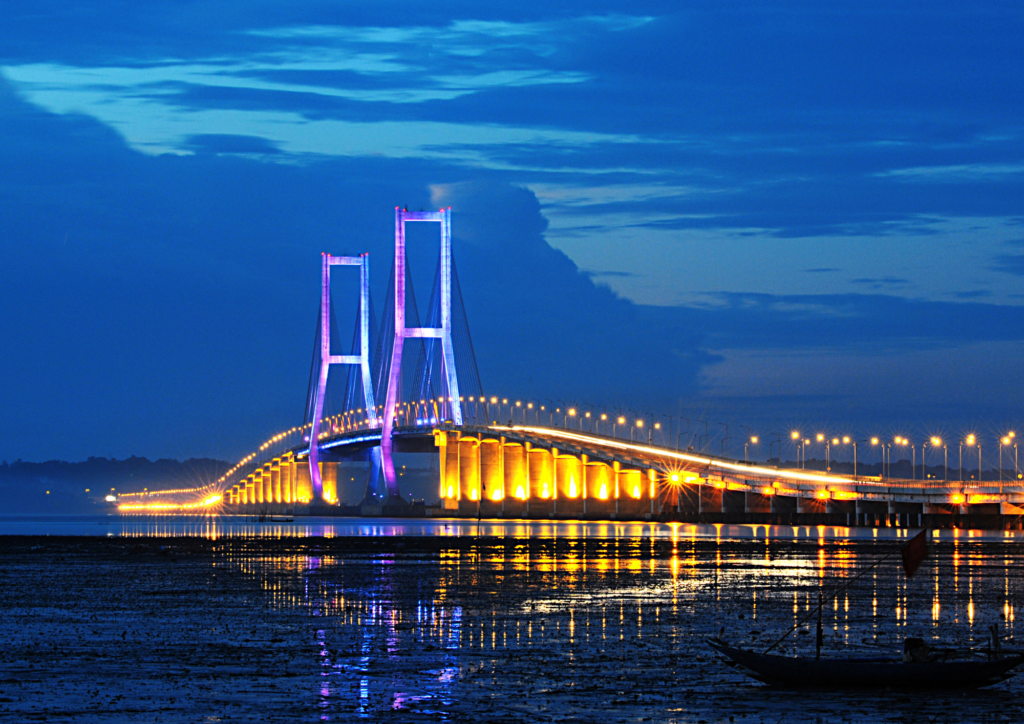

Tanjung Jabung Timur (Indonesia)
Tanjung Jabung is located on the east coast, with its west coast stretching across 12 km of the Sungai Berbak river mouth, and 15 km south of Tanjung Jabung. The city’s mangrove forest fringe ranges from 200-500 m wide and consists mainly of Avicennia marina and Rhizophora species with about 10 species of large waterbirds, including milky storks.
Bandar Khamir (Islamic Republic of Iran)
With the longest wetland coastline in Iran, Bandar Khamir has started a widespread popular movement – comprising events, festivals, educational workshops and numerous learning centers – in recent years for the wise use of the wetland. As a result of increased awareness and education of the value of the wetland and its ecosystem services, the participation and involvement of different groups to protect the wetland has increased.
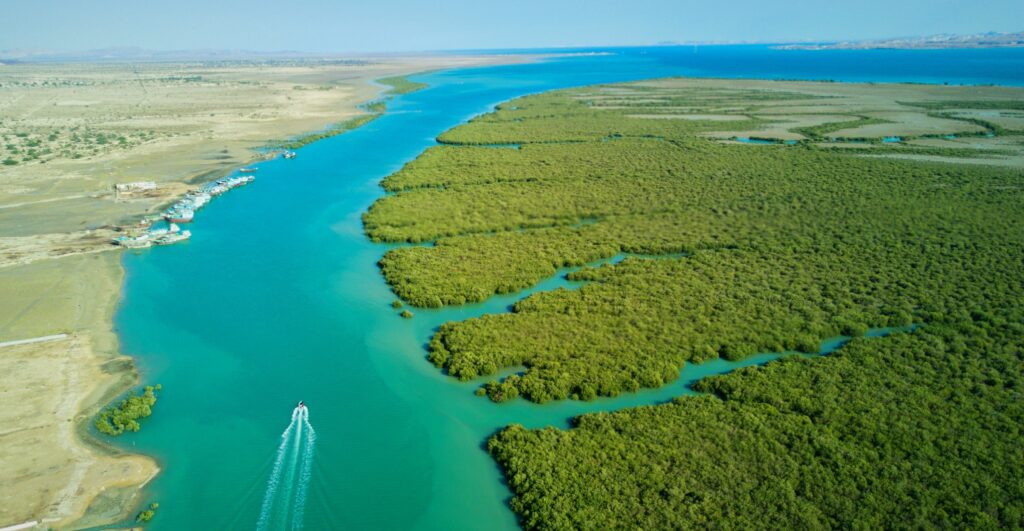
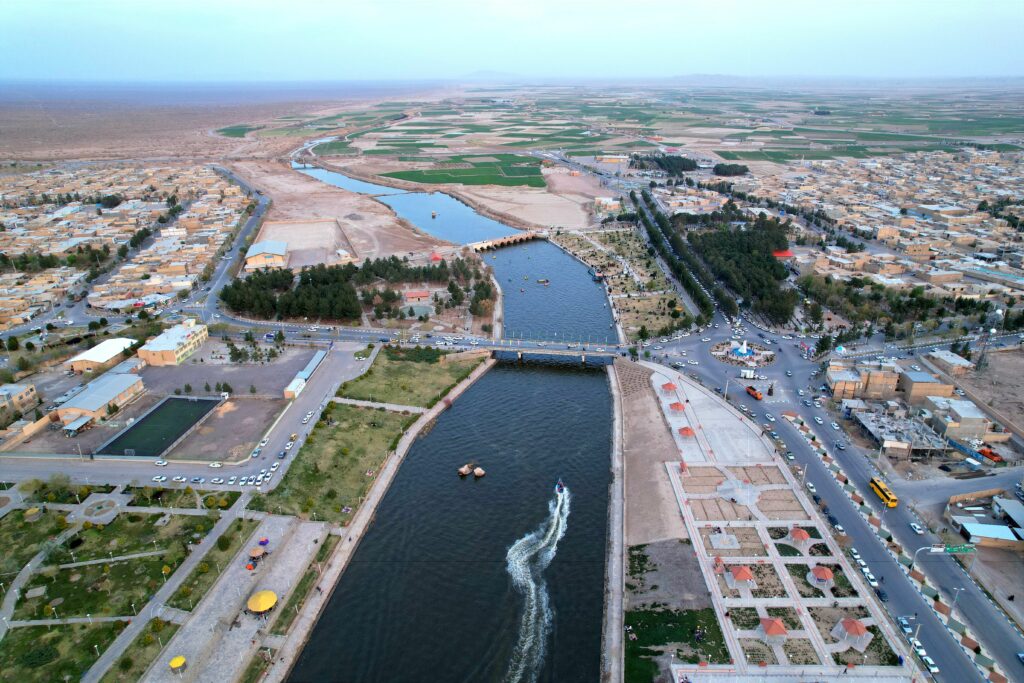
Varzaneh (Islamic Republic of Iran)
Varzaneh city is located 20 km from Gavkhouni International Wetland which is supplied by the ZayandehRud river that passes through the city. Because of the hot climate of the city, the river and wetlands have benefited residents’ livelihoods, including agriculture, animal husbandry and ecotourism.
Al-Chibayish (Iraq)
Many projects implemented in Al-Chibayish city have contributed to the revival and sustainability of its wetlands. These wetlands support infrastructure and basic services for the local population and economy, in addition to its unique scenery and ecotourism services. The marshes also support a unique cultural heritage that is characterized by its residents and their traditional handicrafts, landscapes and biodiversity – such as buffalo and wild birds.


Izumi (Japan)
Izumi City is known as the largest wintering site of cranes in Japan, where more than 10,000 hooded and 2,000-3,000 white-naped cranes migrate every winter. The wintering habitat comprises mainly rice paddies which have been protected by Japanese policies against development. One of the city’s pillars of city planning includes “A city where human happiness and environmental conservation go together”.
Niigata (Japan)
Niigata recognizes the multifaceted benefits of wetlands near the city and involves their citizens in protection activities – particularly for fisheries – such as including school children for environmental education. The Niigata community has a relationship with the waterfowl, such as swans, that roost in the wetlands at night and feed in the rice paddies of the city area during the day.

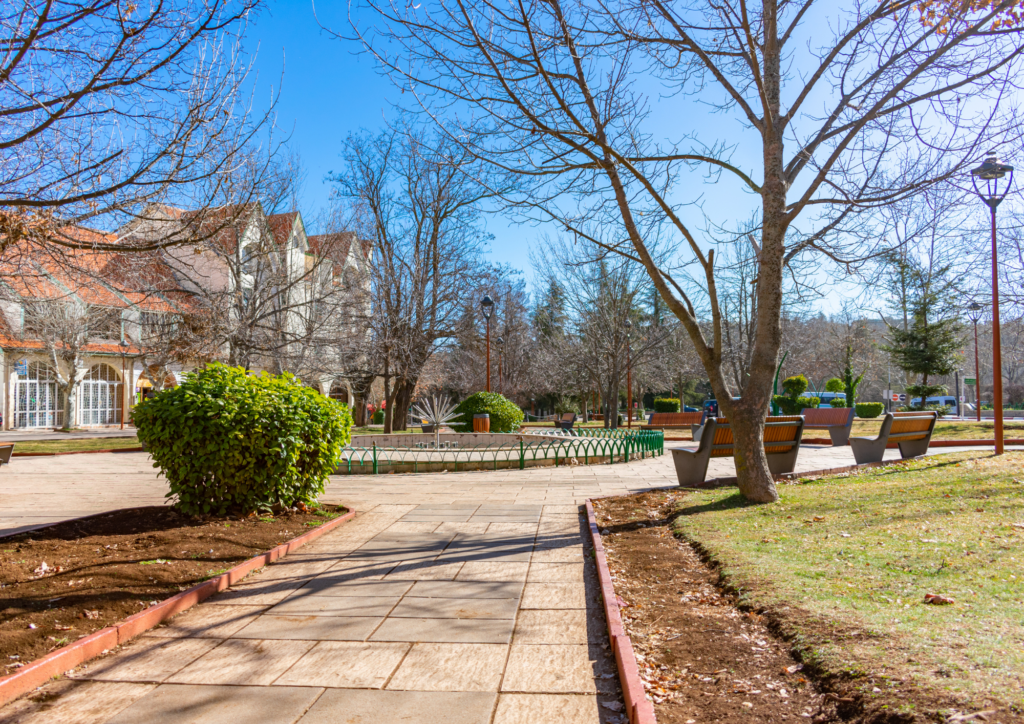
Ifrane (Morocco)
Ifrane is located in the heart of the Atlas Cedar Biosphere Reserve, and considered to be the “ecological capital” of the Kingdom of Morocco. The City is working to conserve its urban wetland ecosystems – Lake Zerrouka, the Aïn Vittel springs and Oued Tizguite – through many national regulatory measures and instruments for the protection of wetlands. With its partners, Ifrane Province is a pioneer in the restoration of wetlands by piloting the “Lake Dayet Aoua restoration project”.
Gochang (Republic of Korea)
There are two Ramsar wetlands in Gochang, both protected under the National Wetlands Protection Act. Gochang has restored the paddy fields since 2017, and restored the brackish water zone between 2016 to 2020. The area is surrounded by ecotourism activities, such as the open market, and educational programs that are creating awareness among the communities of the importance of restoring wetlands.
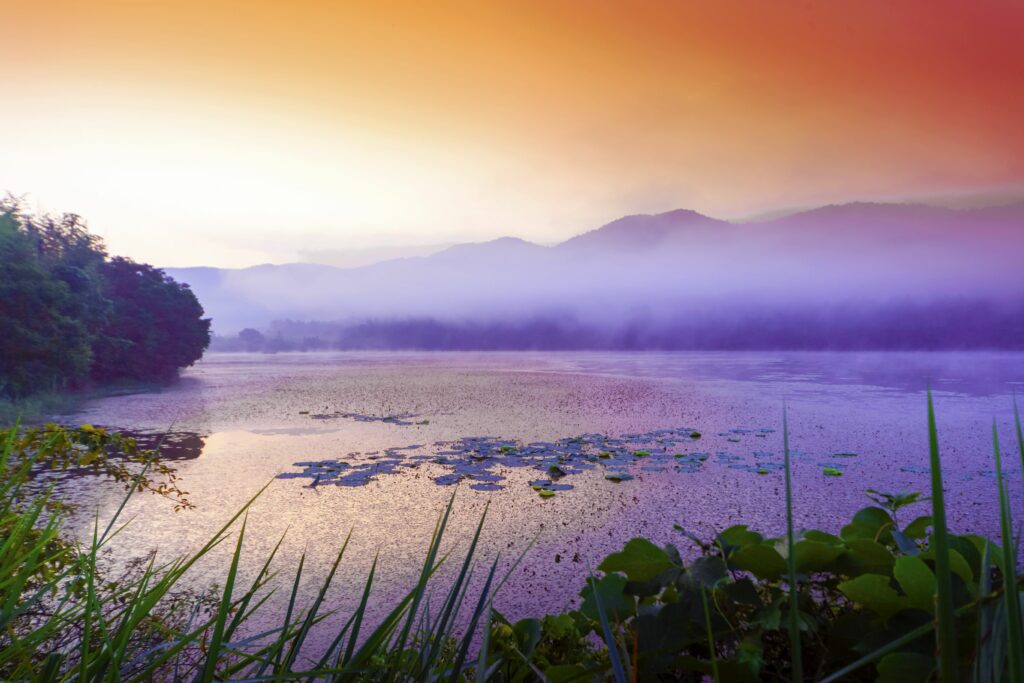
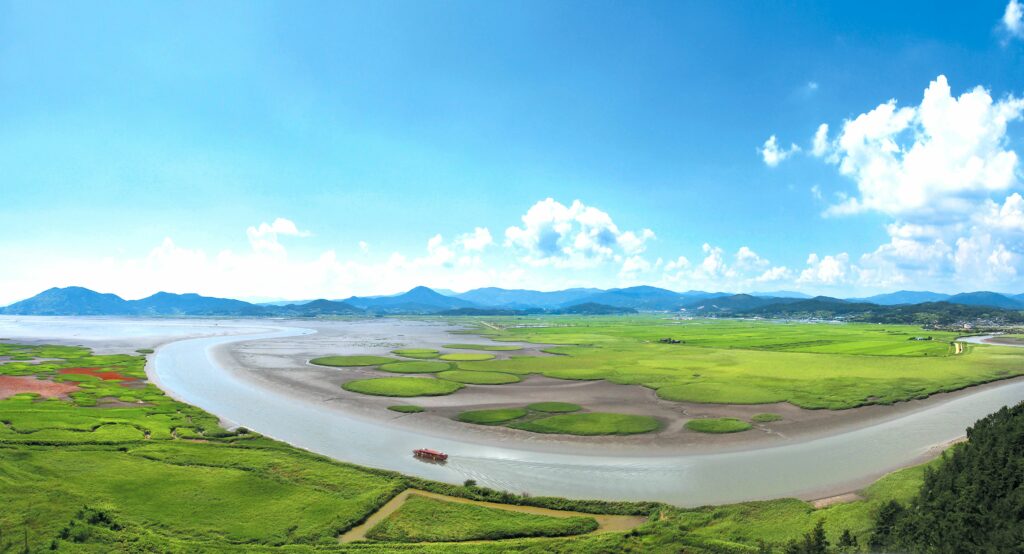
Seocheon (Republic of Korea)
The Seocheon Getbol wetland reserve – a UNESCO World Natural Heritage Site – is a designated migratory route for migratory birds between East Asia and Oceania, and home to 19 endemic species and three endangered invertebrates, supporting 100 species of waterfowl. The Seocheon County Ordinance operates the Wetlands Protection Committee, a public-private joint organization, to systematically preserve and manage wetlands through monitoring, restoration and waste collection.
Seogwipo (Republic of Korea)
The Mulyeongari Oreum Wetland in Seogwipo City is home to 15 endangered species of living organisms. Ecological specialists and local residents in Seogwipo City perform extensive ecological monitoring on a regular basis to protect the Mulyeongari Oreum Wetland.
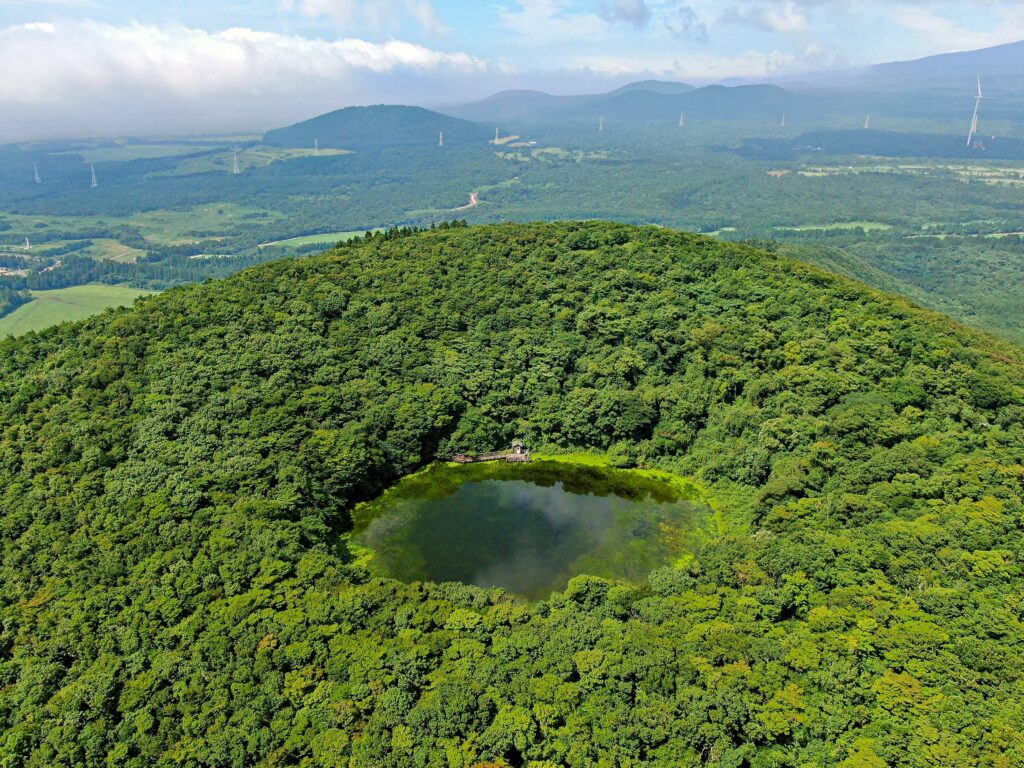
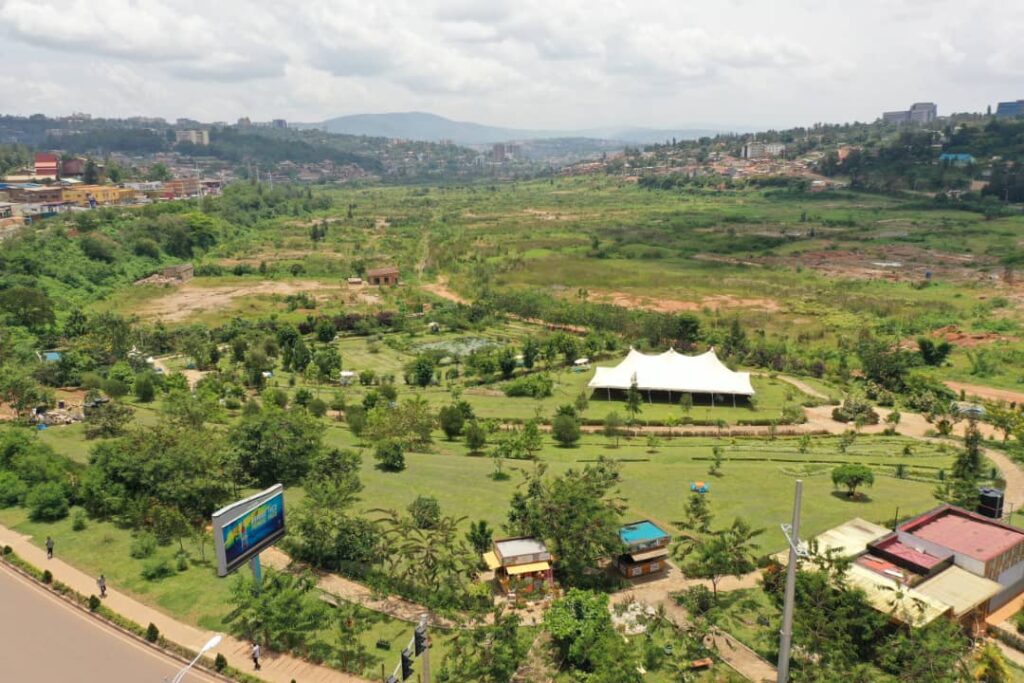
Kigali (Rwanda)
The Kigali Wetlands have been threatened by human activities such as agriculture, human settlements, commercial and industrial activities – decreasing their capacity for flood and pollution abatement. In response, the City is implementing strategic ecological rehabilitation solutions such as the Kigali wetland masterplan, which supports the efficient and sustainable management and use of wetlands. As a result, all business activities inside wetlands were evacuated; Nyandungu wetland (121.7ha) was transformed into a recreational eco-park; and a study to rehabilitate five wetlands that cover 480 ha has been conducted to contribute to its Vision 2050 of developing a Green City.
Cape Town (South Africa)
Cape Town is a coastal city with numerous wetlands and is a recognized global biodiversity hotspot. The City aims to mitigate wetland damage through innovative policies and plans, wetland offset projects, best-practice wetland management and restoration, people and conservation programmes, skills development, job creation, plus the Mayor’s priority water quality programme addressing impacts to and rehabilitation of the City’s larger wetlands.
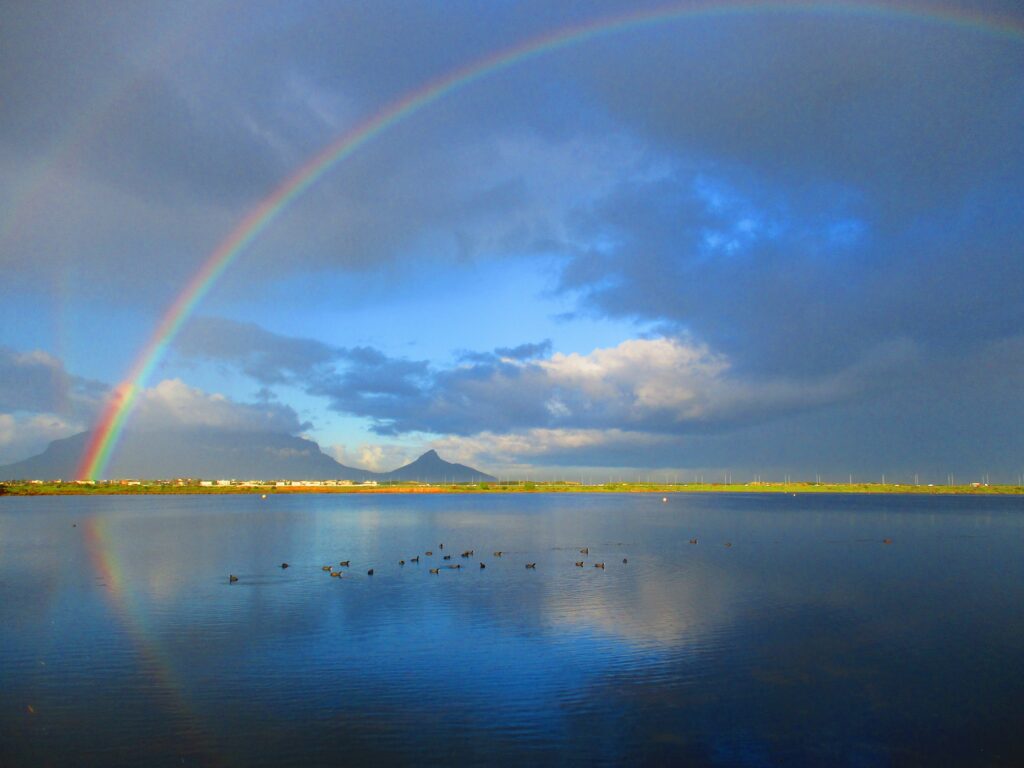
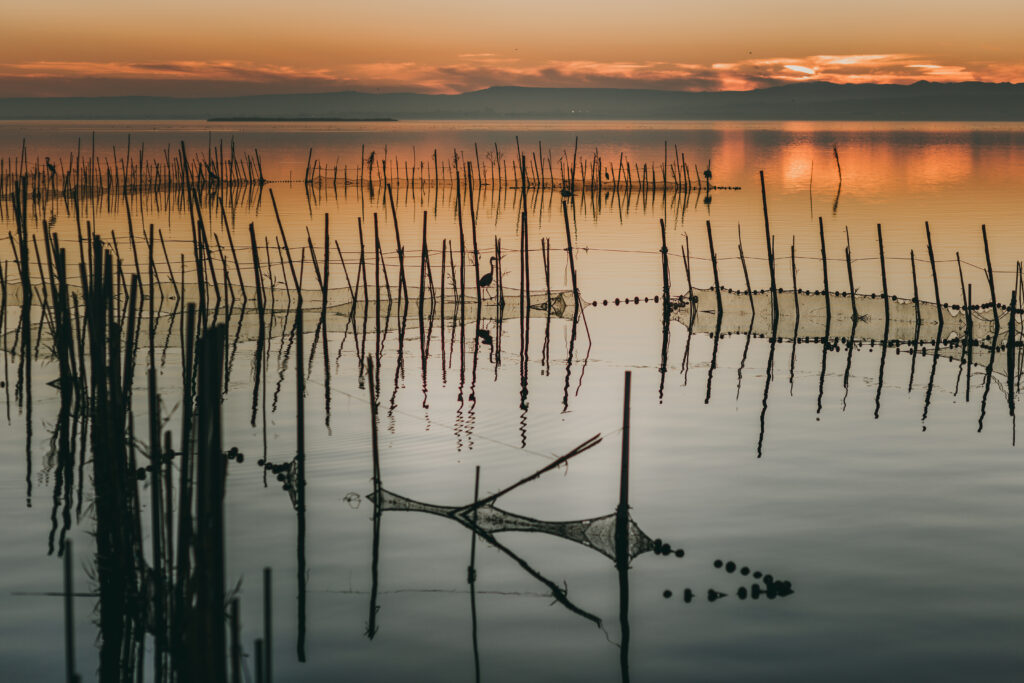
Valencia (Spain)
L’Albufera de València is a wetland culturally linked to the community’s heritage, including traditional fishing and rice cultivation. Since the 1970s, Valencia’s City Council has played a fundamental role in the site protection and planning, which has resulted in the lagoon and coastal forest being declared a Natural Park in 1986. In 1982, the Devesa-Albufera Municipal Service was created, responsible for the development of plans and projects for the conservation and restoration of the wetland.
Sri Songkhram District (Thailand)
The Songkhram River has a basin of 6,473.27 km2 and is an important tributary of the Mekong River. About 54.2% of the overall Songkhram Basin may be classified as “wetlands”, which are significant as a capture fishery providing seasonal employment, income and food to thousands of households. Other products are also sourced from the wetlands by local residents (e.g. mushrooms, bamboo shoots, wild vegetables and reeds). The wetlands, declared as a Ramsar site, are protected as a “community forest” on both sides of the Songkhram River, set up by Thailand’s Royal Forest Department.
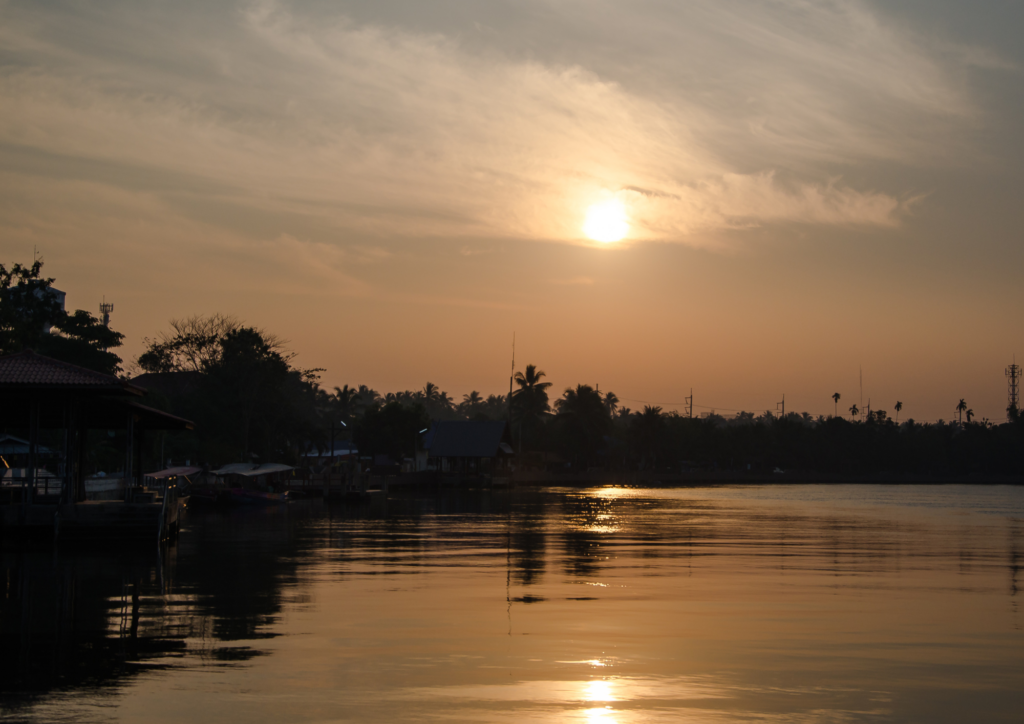
The Independent Advisory Committee (IAC) governs the Wetland City Accreditation Scheme. This committee reviews the Wetland City Accreditation applications from candidate cities and reports its decision to the Standing Committee of the Convention. ICLEI, along the Convention on Wetlands’ International Organization Partners, promotes the Wetland City Accreditation Scheme and local efforts to gain and maintain its branding. Through ICLEI’s city networks and CitiesWithNature platform, it is well positioned to promote the Wetland City Accreditation brand. During the second triennium from 2019 until 2022, ICLEI has been serving as Co-chair of the IAC, 25 more cities were accredited and they received their award during an Award Ceremony at COP14 in Geneva in 2022.
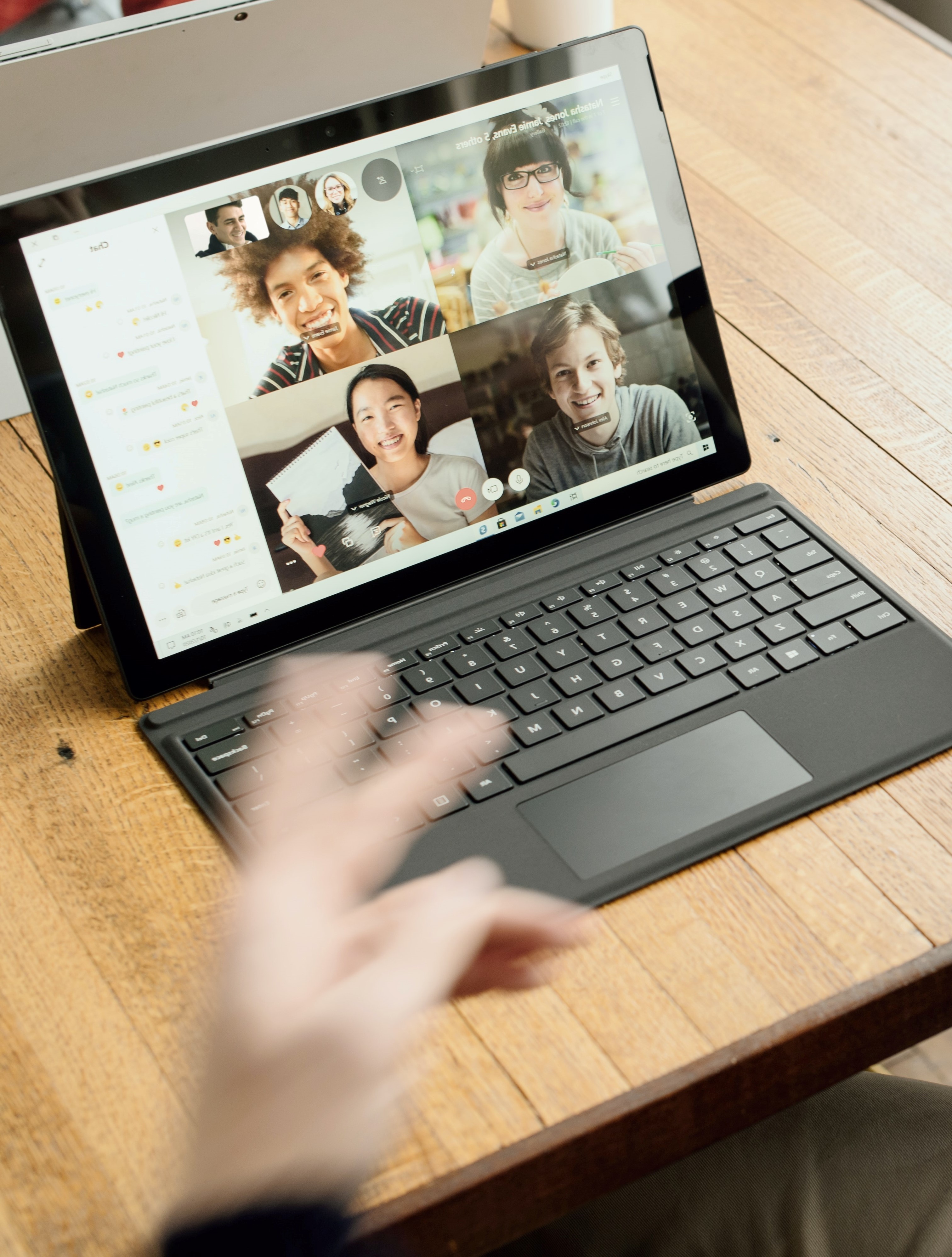
In the build-up to the Convention on Biological Diversity (CBD) COP15 – which will take place in Montreal from 7-19 December 2022 – ICLEI Cities Biodiversity Center, in collaboration with ICLEI’s regional offices, provided capacity-building webinars to demonstrate uploading actions and commitments to the CitiesWithNature Action Platform, recognized in the Plan of Action on Subnational Governments, Cities and Other Local Authorities for Biodiversity (2021-2030).
The road to COP 15 is a crucial moment for local and subnational governments to demonstrate their commitments to actions that will contribute to the successful implementation of the new global biodiversity framework (GBF) and its targets. As a result, the CitiesWithNature Action Platform webinars not only trained cities across the world on using the platform, but also explained the importance of their engagement and participation in the platform in the build-up to COP15.
The CitiesWithNature team that served as recurring speakers in all the webinars are:
Ingrid Coetzee
Director Biodiversity, Nature & Health, ICLEI Africa
Stefania Romano
Senior Professional Officer – Global CitiesWithNature and RegionsWithNature Coordinator: Recruitment and Advocacy
Willemien Calitz
Communications Officer
Jade Sullivan
Professional Officer: Biodiversity, Nature & Health
| USA RO | Speakers: Calyn Hart Program Officer, ICLEI USA |
| Southeast Asia RO | Speakers: Russel James Andrade Biodiversity Focal for ICLEI Southeast Asia; Project Assistant Victorino Aquitania Regional Director ICLEI - Local Governments for Sustainability Southeast Asia Secretariat Dr. Rajan Chedambath Director: The Kochi Municipal Corporation and the Centre for Heritage, Environment and Development Puerto Princesa City Dr. Lena Chan Senior Director of the International Biodiversity Conservation Division, National Parks Board (NParks) of Singapore |
| SAMS & MECS | SAMS (Portuguese) Speakers: Marília Israel de Azevedo Borges Biodiversity Analyst at ICLEI South America Rodrigo Corradi Deputy Executive Secretary at ICLEI South America Oliver Hillel Programme Officer at the Secretariat of the Convention on Biodiversity Bianca Cantoni Coutinho Advocacy Officer at ICLEI South America Jaime Holguin Representative of the Development Bank of Latin America (CAF) Luciano Paes Secretary of Climate of Niterói Gabriel Neves Municipal Secretary of Green, Environment and Sustainable Development Municipal Government of Campinas Leta Vieira Technical Regional Manager: Low-Carbon, Resilience, Biodiversity and Circular Development, ICLEI ICLEI SAMS (MECS) Speakers: Ivana Del Río Technical Secretariat - ICLEI Mexico Maria Mejia Lead - BiodiverCities by 2030 Initiative at Instituto de Investigación de Recursos Biológicos Óscar Figueredo Bucaramanga Metropolitan Area, Colombia Paulina Soto Director of Programmes and Projects Sergio Aranguren Biodiversity Coordinator, ICLEI Braulio Diaz Institutional Relations and Advocacy Regional Manager, ICLEI |
| Oceania RO | Speakers: Steve Gawler Regional Director ICLEI Oceania Cr Amanda Stone Councillor, Yarra City Council, Australia, ICLEI Global Executive Committee Member and ICLEI Oceania Regional Executive Committee Helaine Stanley Program Advisor CWN Academy Nadine Gaskell Biodiversity Coordinator, City of Knox |
| European RO | Speakers: Shreya Utkarsh Officer: Sustainable Resources, Climate and Resilience Gillian Dick Spatial Planning Manager – Research & Development Development Plan Group Neighbourhoods, Regeneration & Sustainability, Glasgow City Council Marta Mansanet Cánovas Policy Officer: European Committee of the Regions Holger Robrecht Deputy Regional Director of Sustainable Resources, Climate and Resilience |
| Africa RO | Speakers: Bronwen Griffiths Head: Sustainable Partnerships & Financing, Spatial Planning & Environment: Environmental Management Department, City of Cape Town Alex Kivumbi Principal Community Development Officer, Makindye Ssabagabo, Uganda |
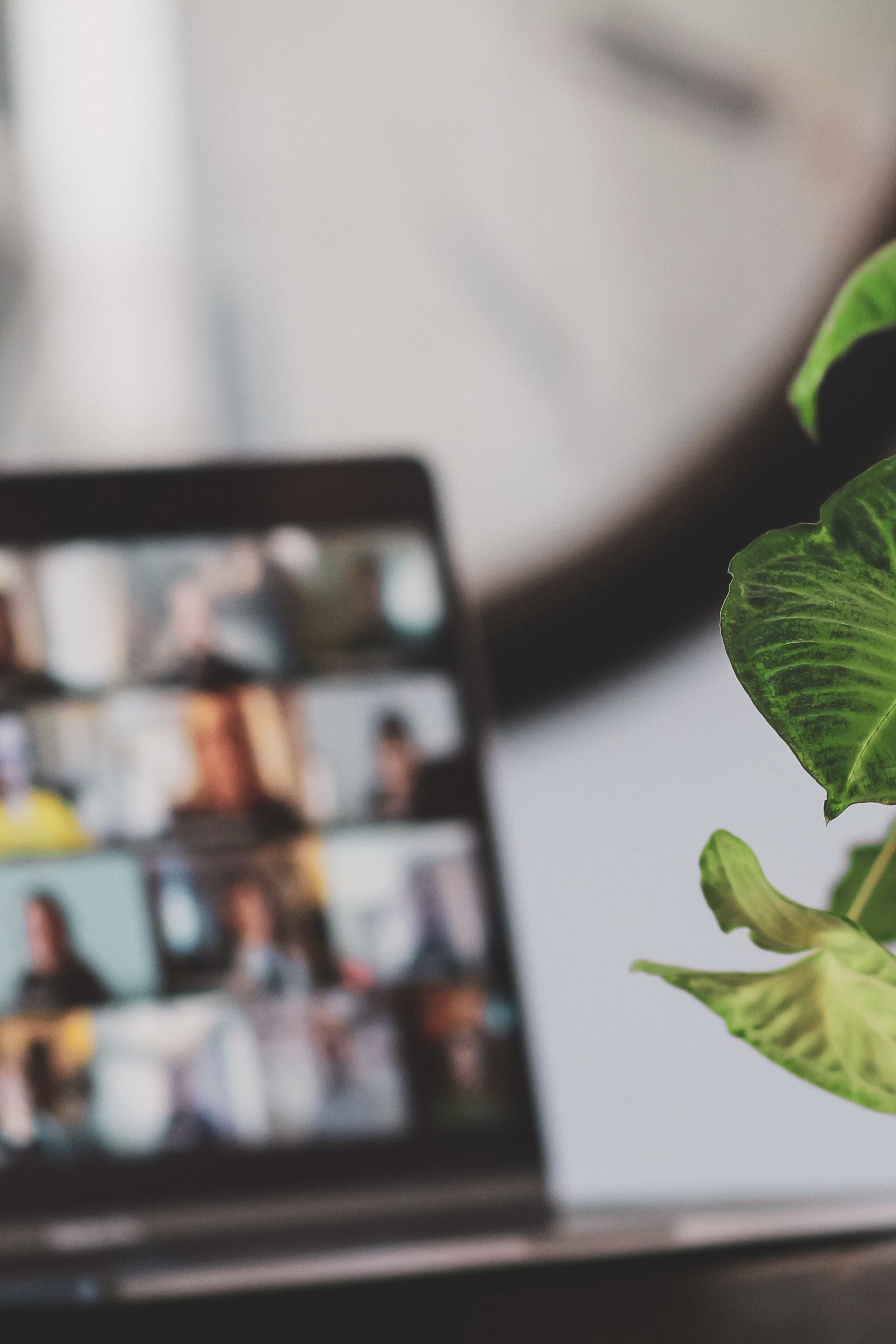
On the road to the Convention on Biological Diversity (CBD) COP15 – which will take place in Montreal from 7-19 December 2022 – ICLEI Cities Biodiversity Center, in collaboration with ICLEI’s regional offices, is providing capacity-building webinars to demonstrate uploading actions and commitments to the CitiesWithNature Action Platform, recognized in the Plan of Action on Subnational Governments, Cities and Other Local Authorities for Biodiversity (2021-2030).
By enabling and supporting local and subnational governments to achieve the global nature goals and their commitments for nature, the Action Platform is intended to align with, and feed into, the National Biodiversity Strategies and Action Plans (NBSAPs) and National Reports to the CBD of countries that have ratified the Convention.
With COP 15 around the corner, it is a crucial moment for local and subnational governments to demonstrate their commitments to actions that will contribute to the successful implementation of the new global biodiversity framework (GBF) and its targets. As a result, our Action Platform demonstration webinars aim to assist cities worldwide with using the tool as optimally as possible.
We have set up a range of webinars by region, as shown in the table below. For more information, contact the ICLEI Regional Officer of your region, as indicated in the table.
We welcome you to participate in the webinar and join the concerted efforts for living in harmony with nature.
| USA RO | Kale Roberts - kale.roberts@iclei.org Calyn Hart - calyn.hart@iclei.org Anne Marie Cleary Rauker - am.clearyrauker@iclei.org October 26, 5.30 - 7.00pm SAST time | 11.30am (New York time) |
| Southeast Asia RO | Russel James Andrade - russel.andrade@iclei.org October 21, 8.30am (CEST time) | 2.30pm (Manila time) |
| South Asia | Monalisa Sen - monalisa.sen@iclei.org |
| SAMS & MECS | SAMS, Brazilian Municipalities Bráulio Dias - braulio.diaz@iclei.org Leta Vieira - leta.vieira@iclei.org Marília Israel - marilia.israel@iclei.org Bianca Cantoni - bianca.cantoni@iclei.org One webinar with SAMS - only Portuguese speaking municipalities October 13, 3 - 4.30pm CEST | 10 - 11.30am (Brasília) SAMS and MECS for Spanish speaking municipalities Ecuador, Colombia, Amazonian areas, Perú, Mexico Bráulio Dias - braulio.diaz@iclei.org Leta Vieira - leta.vieira@iclei.org Marília Israel de Azevedo Borges - marilia.israel@iclei.org Bianca Cantoni - bianca.cantoni@iclei.org Sergio Aranguren - sergio.aranguren@iclei.org Ivana del Río Benítez - ivana.del.rio@iclei.org October 25, 4.00 - 5.30pm CEST time | 10 - 11.30am (Mexico time) |
| Oceania RO | Steve Gawler - steve.gawler@iclei.org October 19, 7.30 am SAST time | 4.30 pm AEST |
| European RO | Shreya Utkarsh - shreya.utkarsh@iclei.org Alice Reil - alice.reil@iclei.org October 18, 2 - 3:30pm CET |
| Canada RO | Megan Meaney - megan.meaney@iclei.org Anne Marie - anne-marie.legault@iclei.org November 30, in English 7 - 8.30pm SAST November 29, in French 7 - 8.30pm SAST |
| Africa RO | Tarryn Quayle - tarryn.quayle@iclei.org Uganda, Kisumu (Kenya), Ghana (Cape Coast City) and Quelimane and Nacala in Mozambique Paul Currie - paul.currie@iclei.org Madagascar Kate Strachan - kate.strachan@iclei.org Mozambique Nelson de Lamare - nelson.de.lamare@iclei.org Senegal and Burkina Faso Ernita Van Wyk - ernita.van.wyk@iclei.org Tanzania Vanessa Tshite - vanessa.tshite@iclei.org Bongiwe Simka - bongiwe.simka@iclei.org Sierra Leone November 2, 2 - 3.30pm SAST time |
| East Asia RO | Shu Zhu - Shu.Zhu@iclei.org Ge Liu - ge.liu@iclei.org |
| Japan | Togo Uchida - togo.uchida@iclei.org Tomoya Taniguchi - Tomoya.Taniguchi@iclei.org |